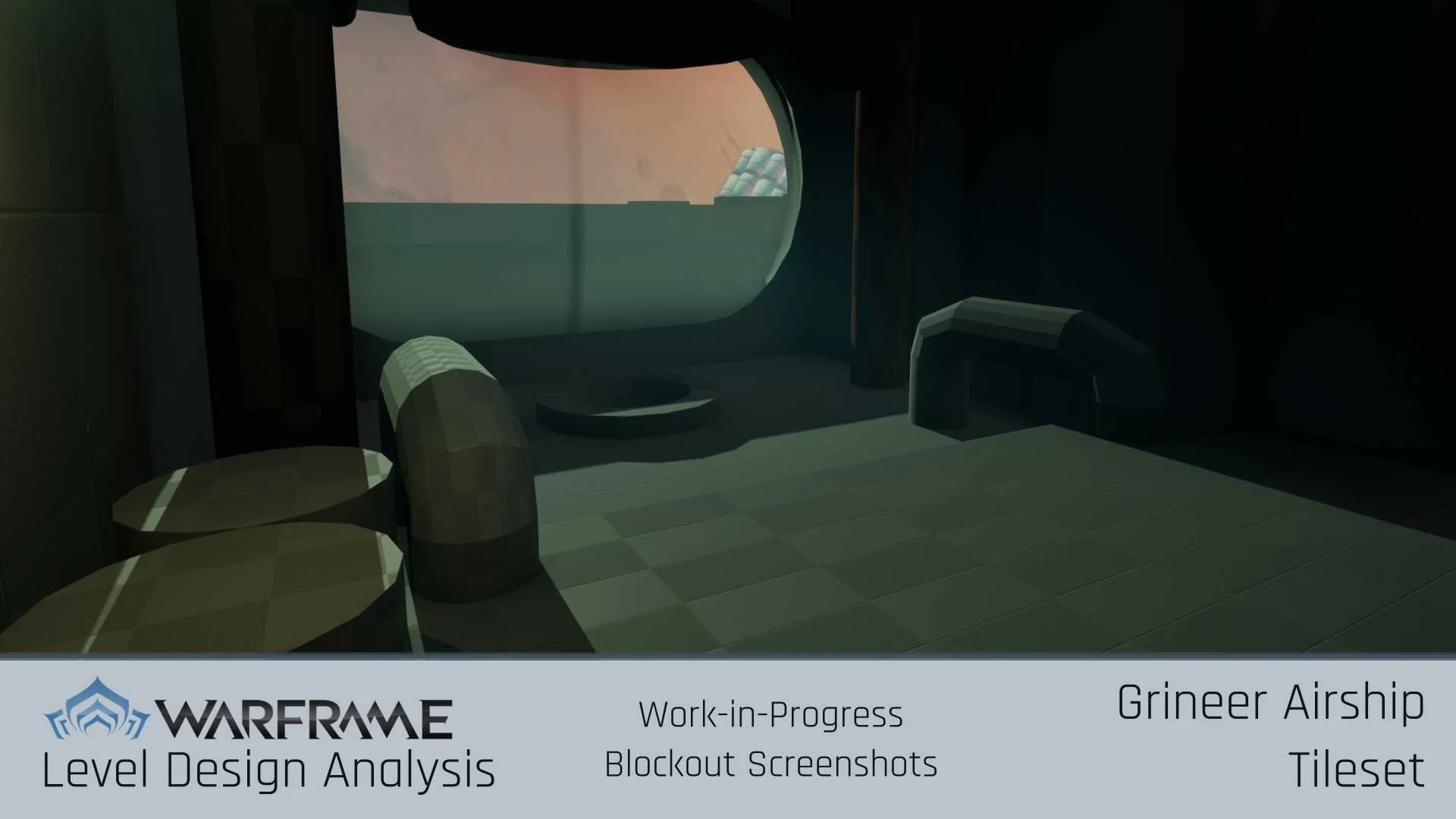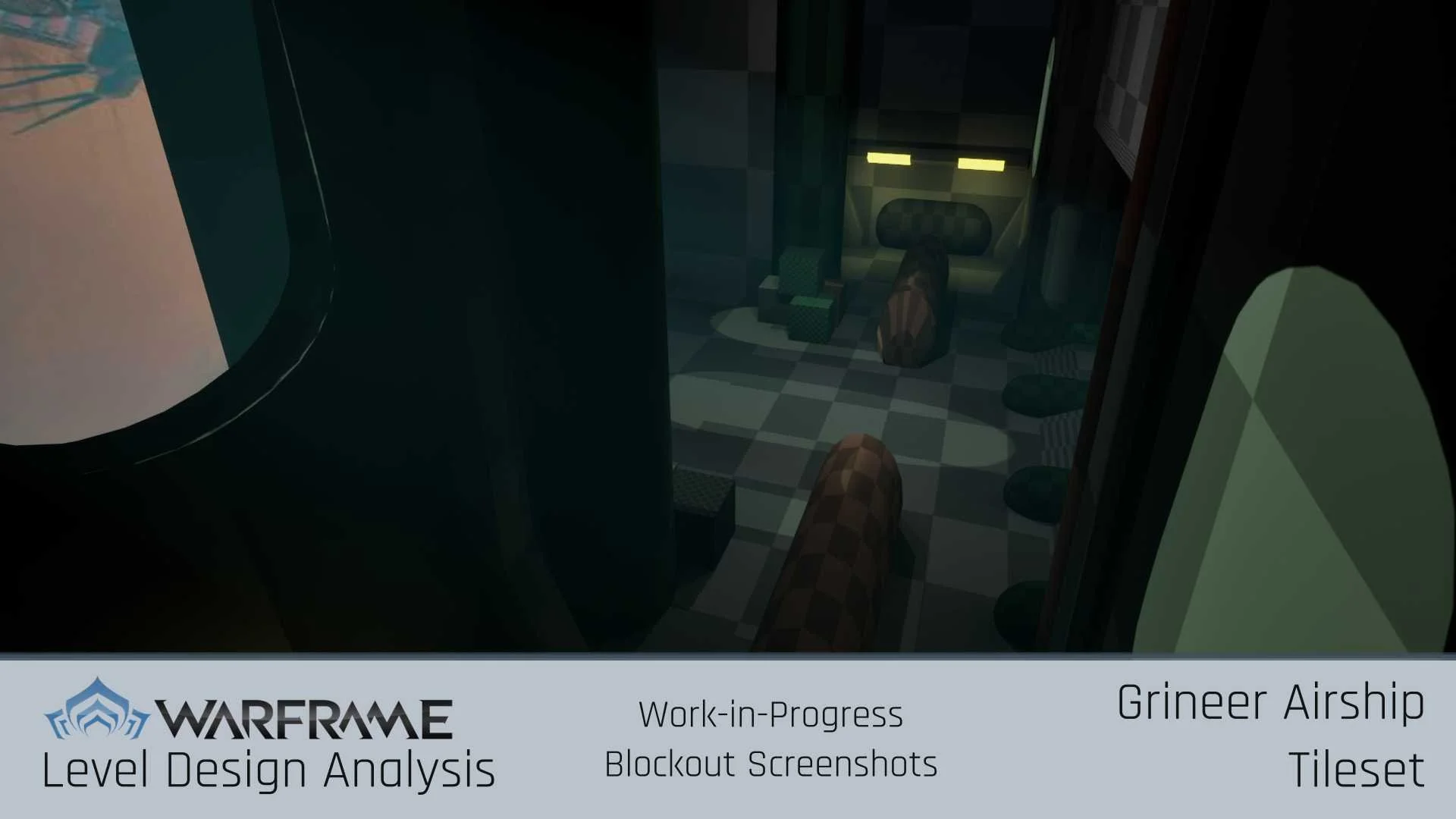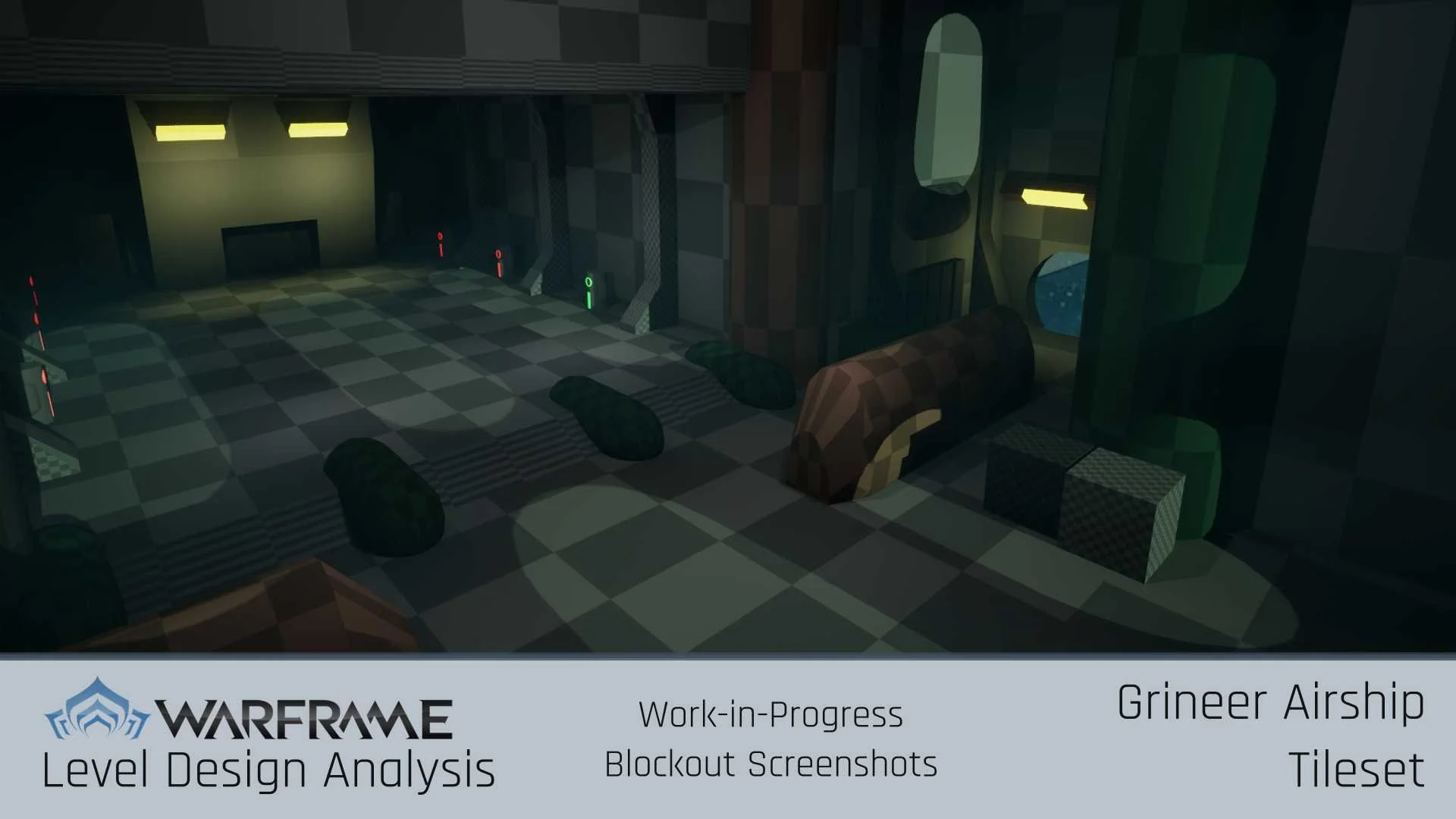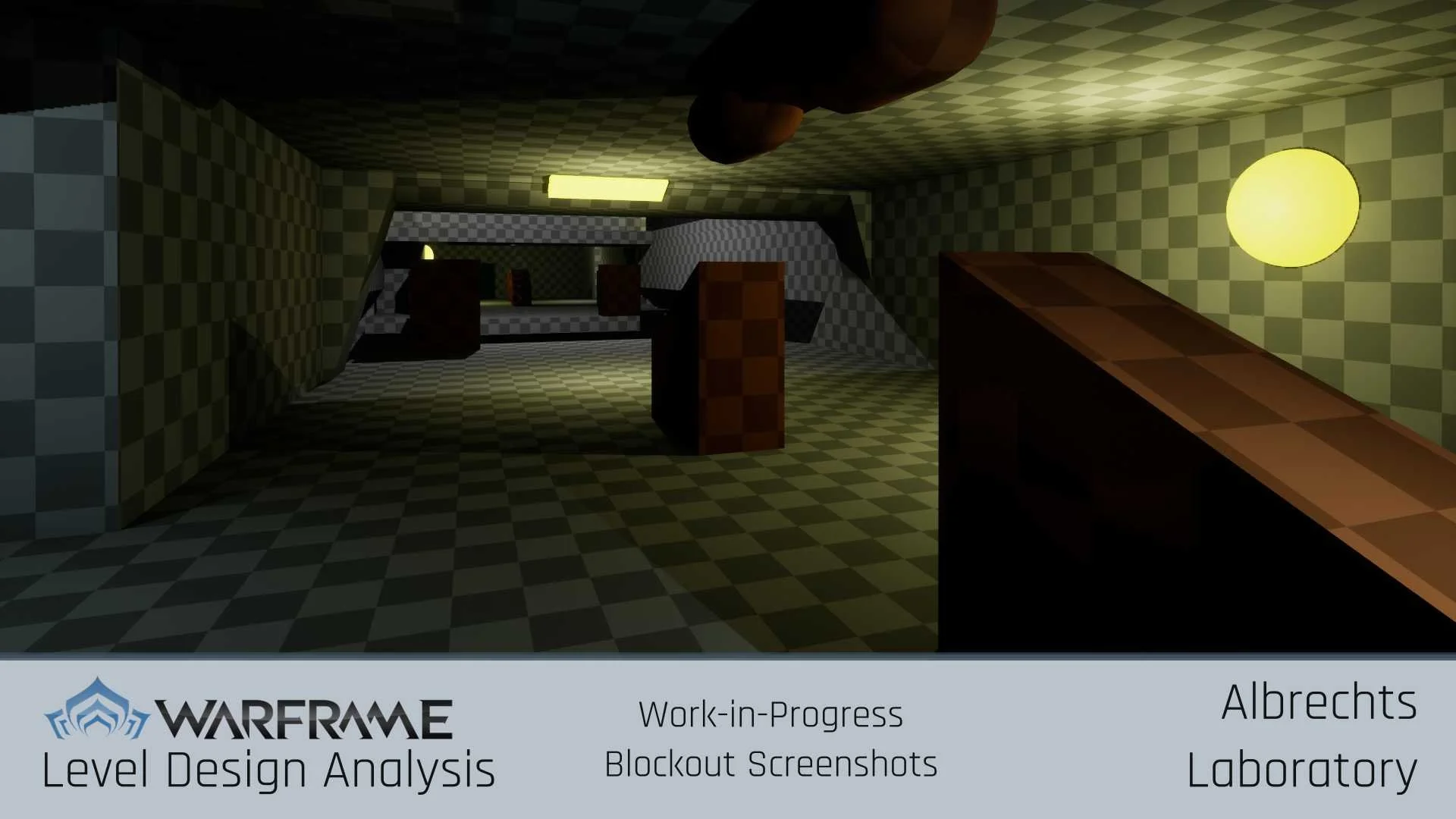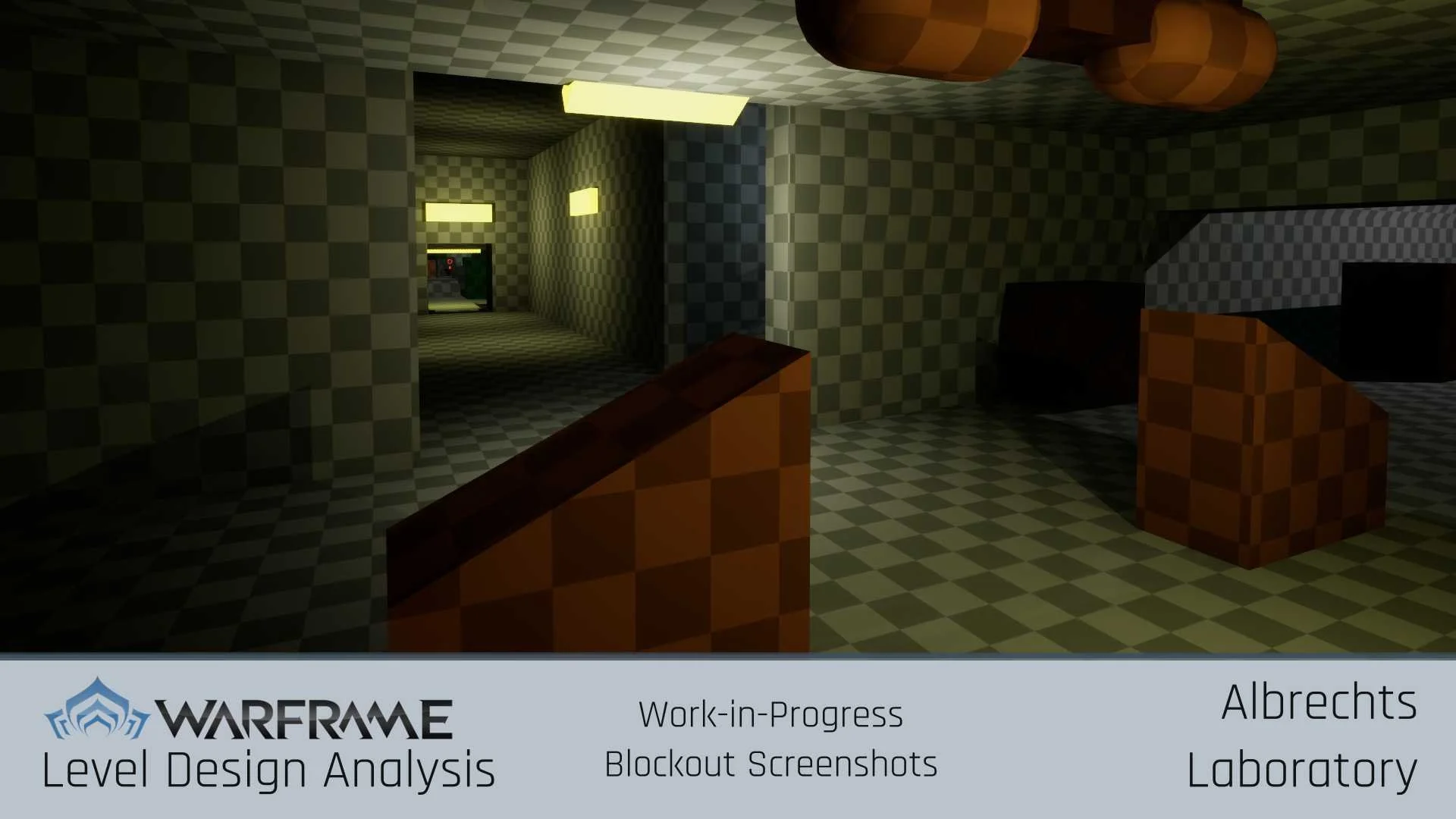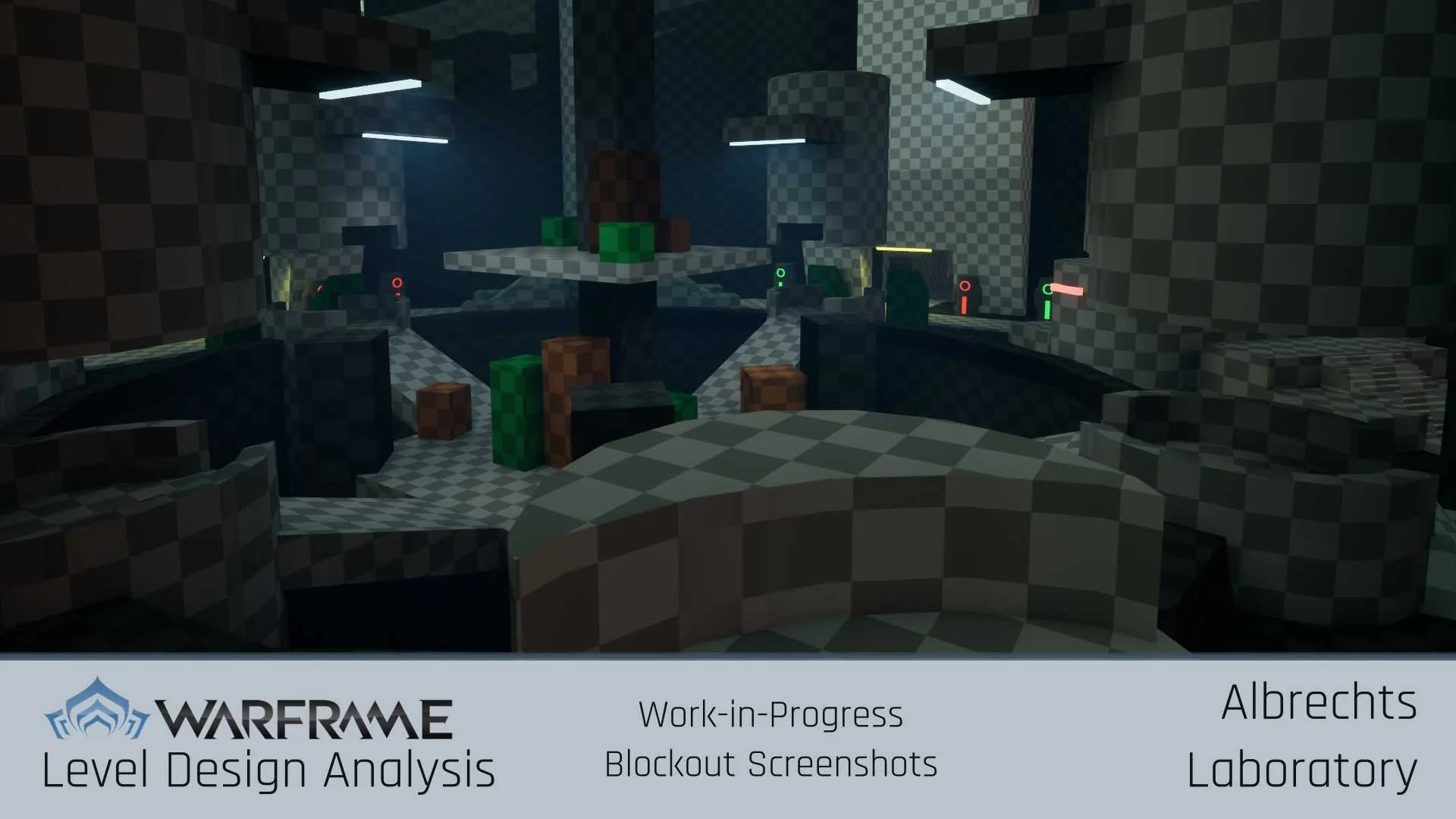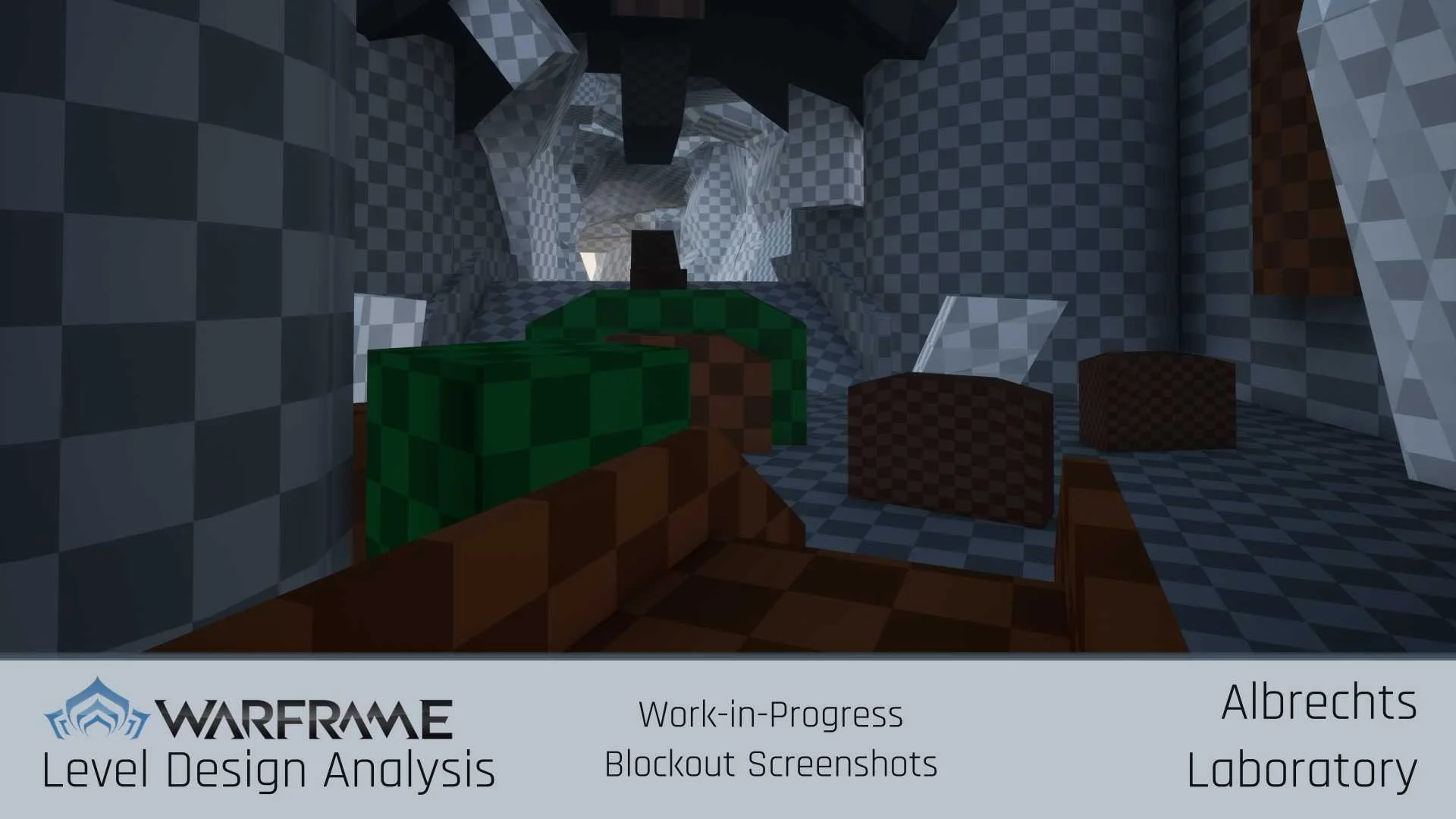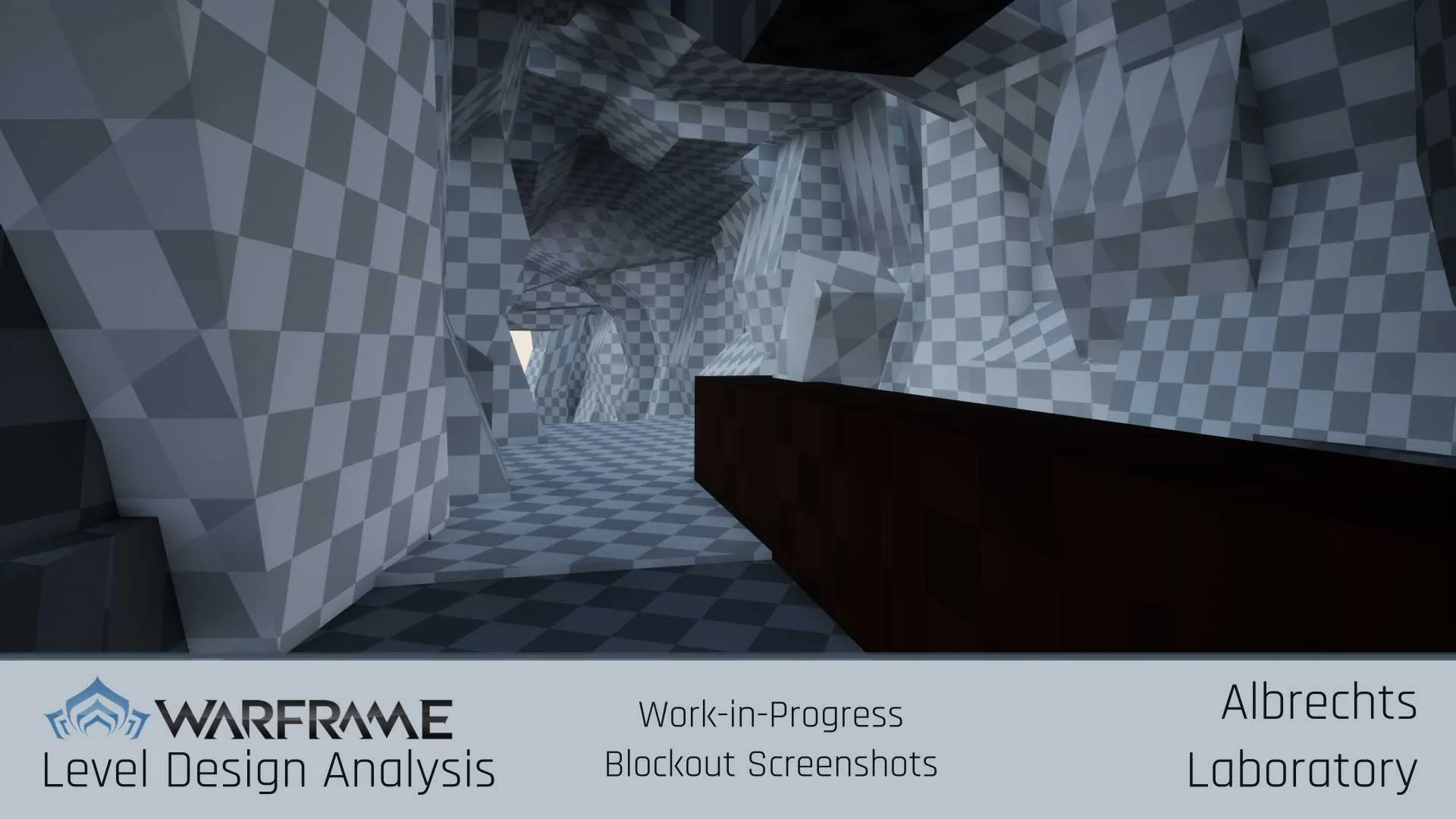Custom Level Tiles
This project is a non-commercial fan-made prototype inspired by Warframe. All rights to the original IP belong to Digital Extremes. Most assets are from Mixamo.
This Project is also still ongoing, I am actively working on it.
Level Summary
Disclaimer
This is an ongoing solo project where I’m actively analyzing and reverse-engineering the Grineer Ship/Albrechts Laboratory tile set from Warframe, with the goal of understanding its level design principles and applying them in custom gameplay-focused rooms built in Unreal Engine.
Responsibilities
Analysis of existing Warframe Level Tiles
Analysis of Leading Lines, Storytelling, and Guidance
Designed custom Room Tiles
Created Concepts, Blockouts, User Tests, Iterations
Created Enemy Behaviour System (Melee and Ranged)
Created Warframe Traversal System and Shooting System
Details
Team Size: 1 (Solo Project)
Genre: Third-Person-Platform Shooter, Action
Setting: Grineer Spaceship and Albrecht’s Laboratory
Level Duration:
Role: Lead Level Designer, Gameplay Programmer
Development Time: 3 Weeks
Engine: Unreal Engine 5
Flythrough
Learn How to Convey Faction Identity Through Architecture
Analyze how the Grineer spaceship tileset uses brutalist, industrial spaces (rusted metal, cramped corridors, exposed machinery) versus how Albrecht’s Lab uses Orokin elegance corrupted by Void anomalies (ornate gold trim, warped geometry, cold blue lighting).
Why: Strong visual identity makes a level immediately readable to the player, both in theme and in gameplay expectation. A designer who understands how Warframe achieves this can create environments that tell the player where they are and who built it without any dialogue.
Goals and Objectives
Understand Modular Room Design for Replayability
Study how Warframe’s tilesets are built from modular room “tiles” that connect in multiple ways, yet still feel like coherent spaces with logical purpose (engine rooms, laboratories, maintenance shafts, ceremonial halls).
Why: Modular design maximizes reusability while preventing repetition from feeling stale. Learning from these tilesets helps balance variety (so players don’t get bored) and narrative cohesion (so rooms still feel like part of a real place).
Master Environmental Storytelling Through Functional Detail
Observe how the Grineer ships embed story in functional details (cluttered pipes, worn metal, grime) and how Albrecht’s Lab does so with thematic props (Void containment chambers, golden architecture, abandoned experiment rooms).
Why: Small details anchor immersion, they convince players that the space was built for a purpose beyond the mission. This makes environments feel alive, deepens lore, and supports emotional tone without breaking gameplay flow.
Grineer Spaceship Tile Research & Study




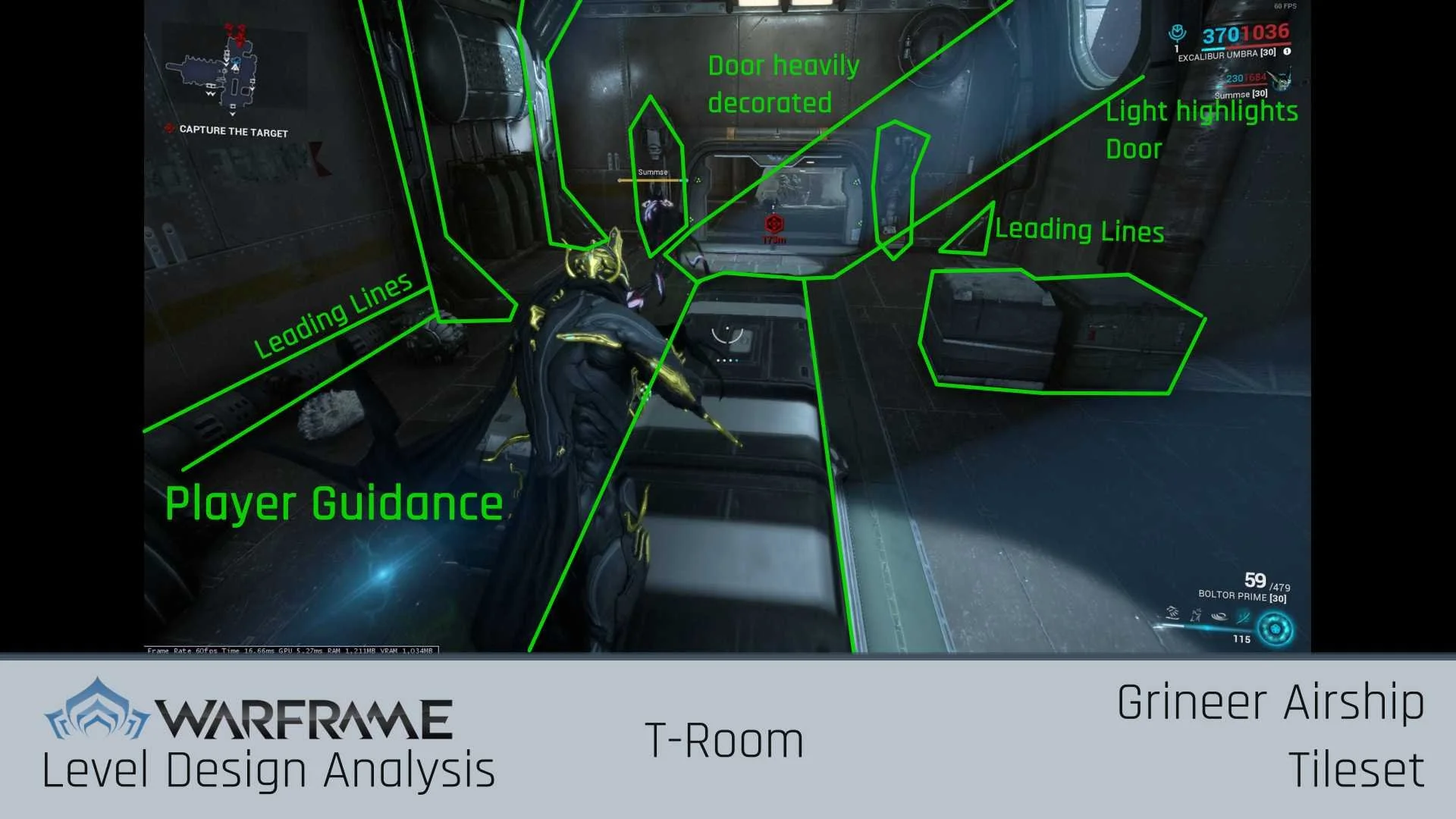
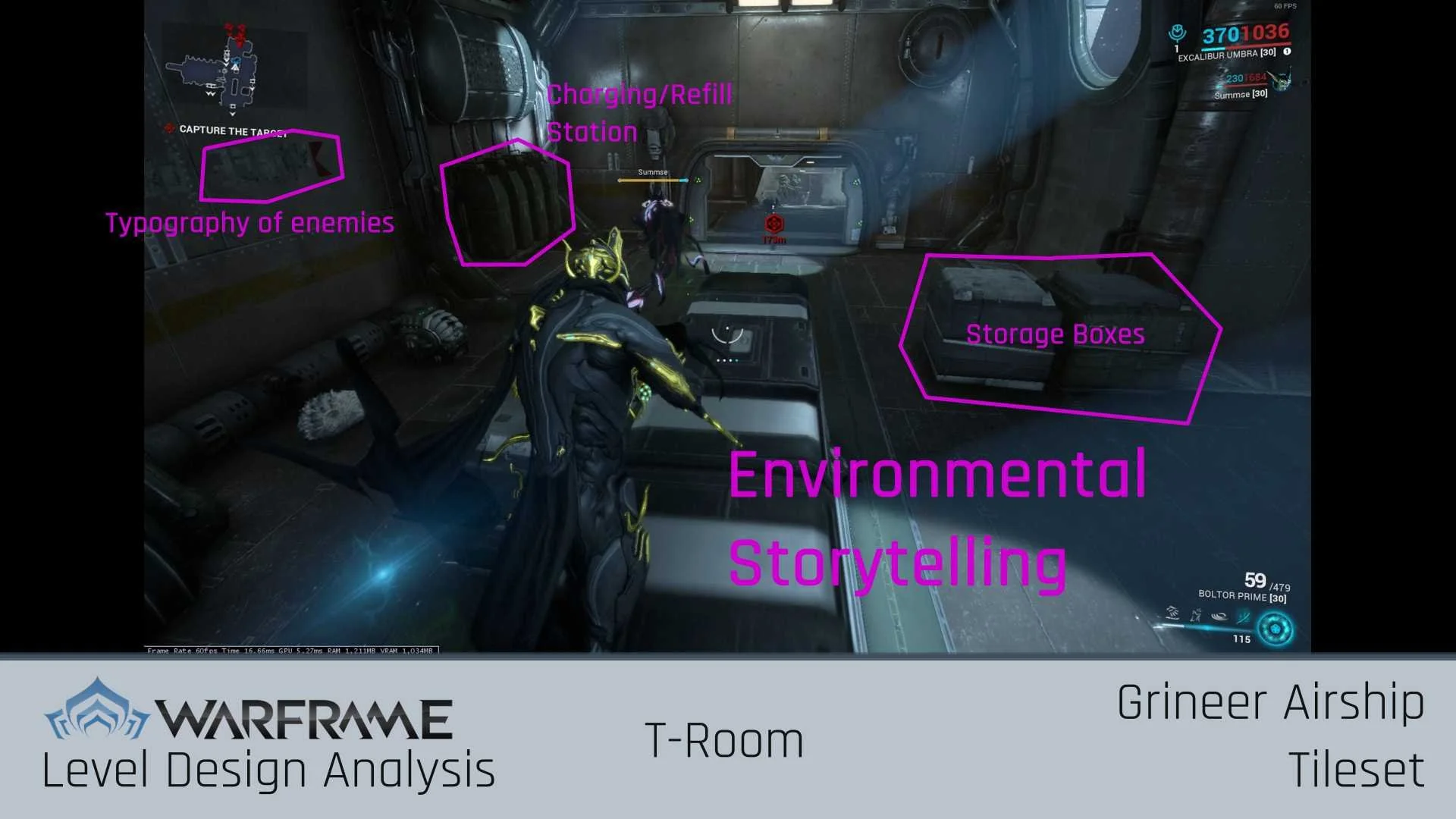
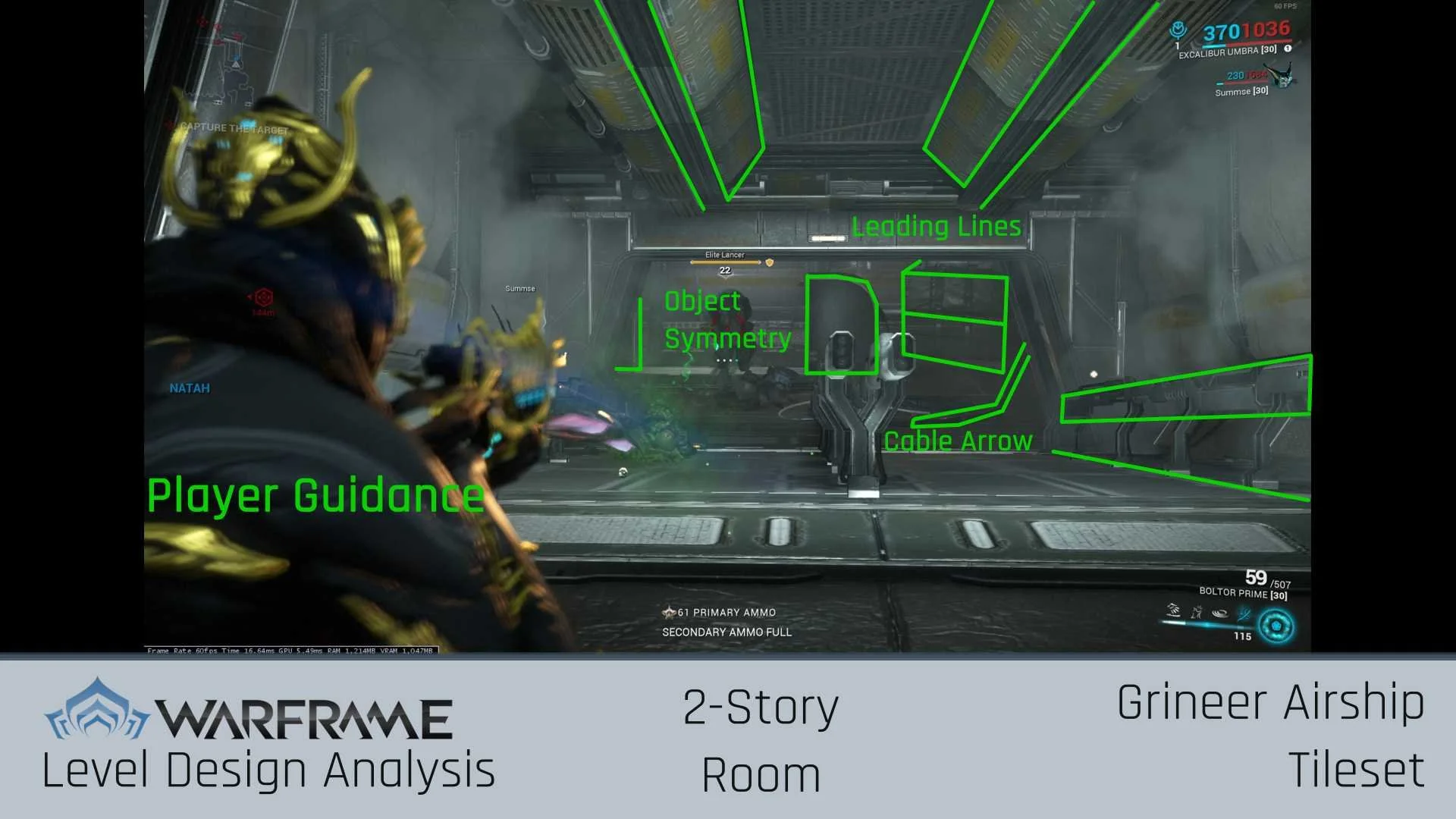
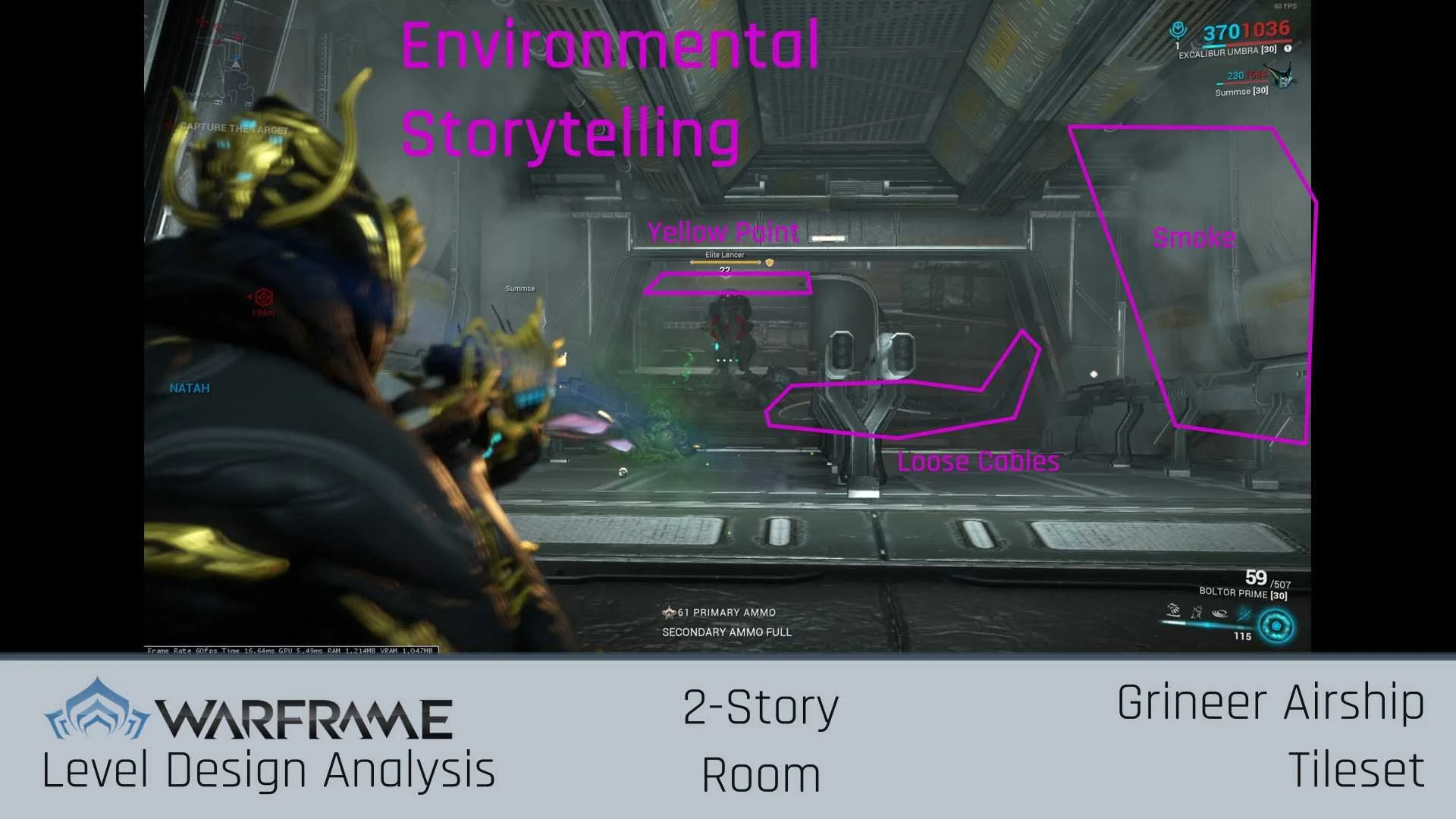
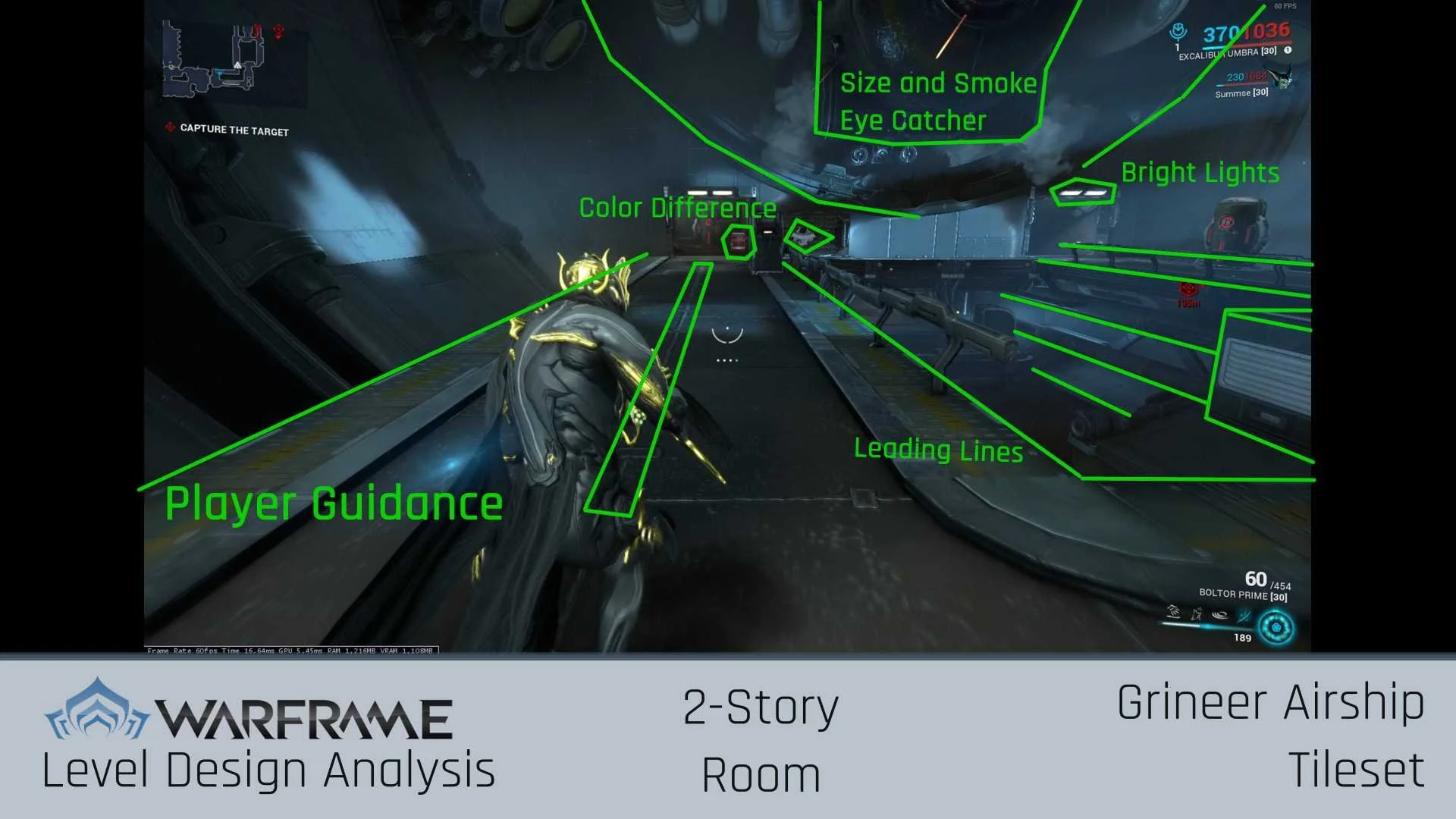
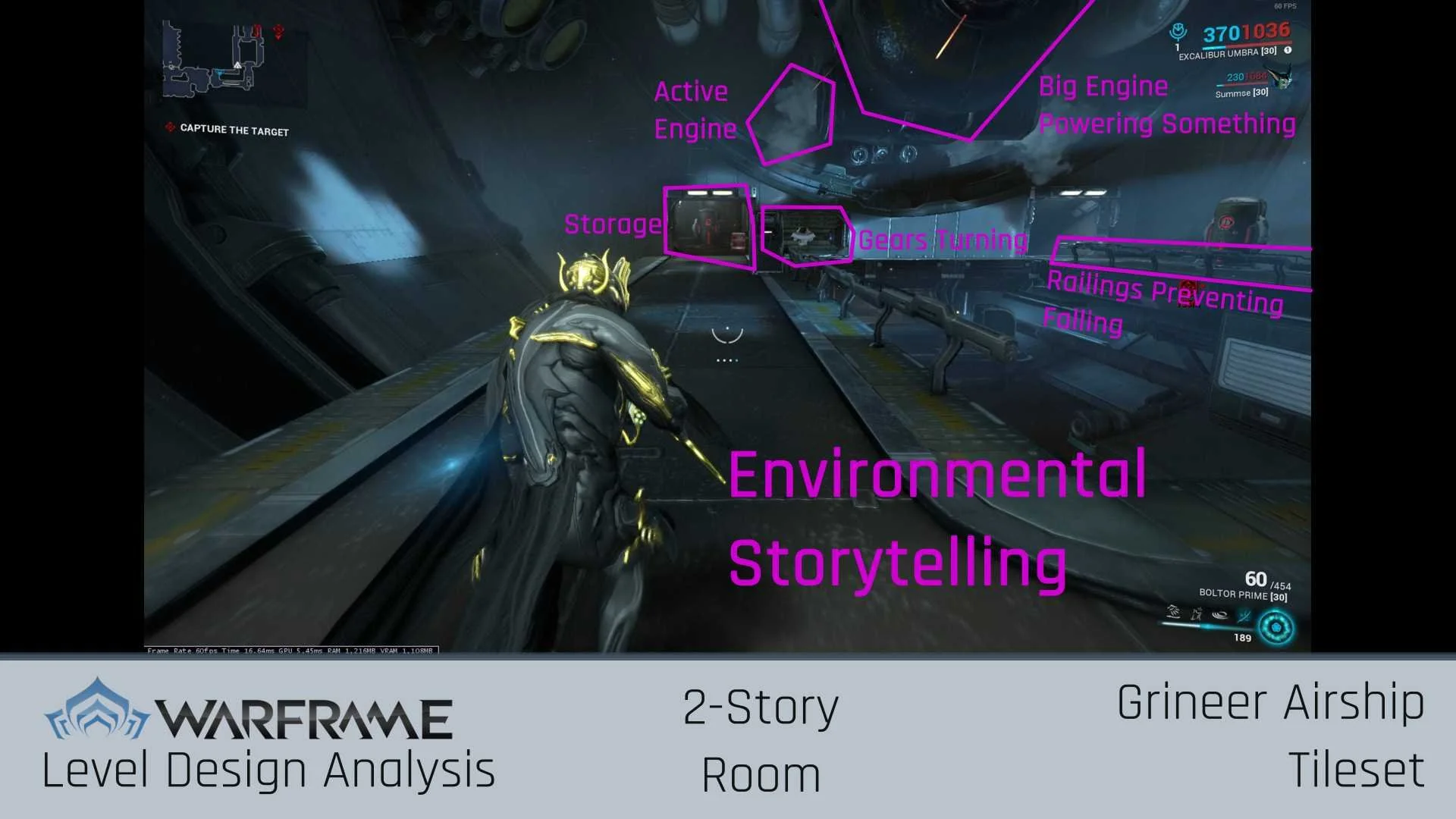
Albrecht’s Laboratory Tile Research & Study
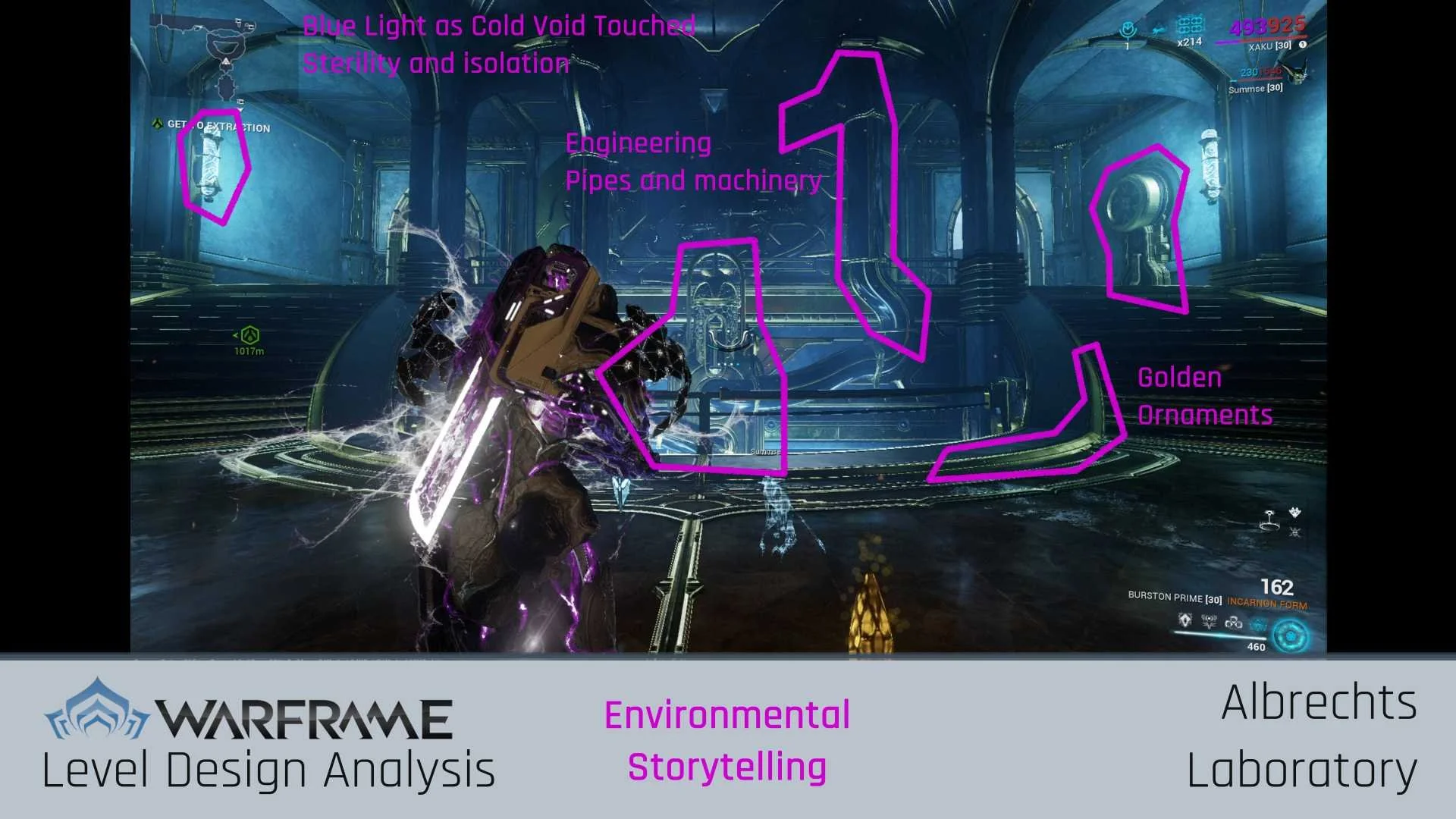
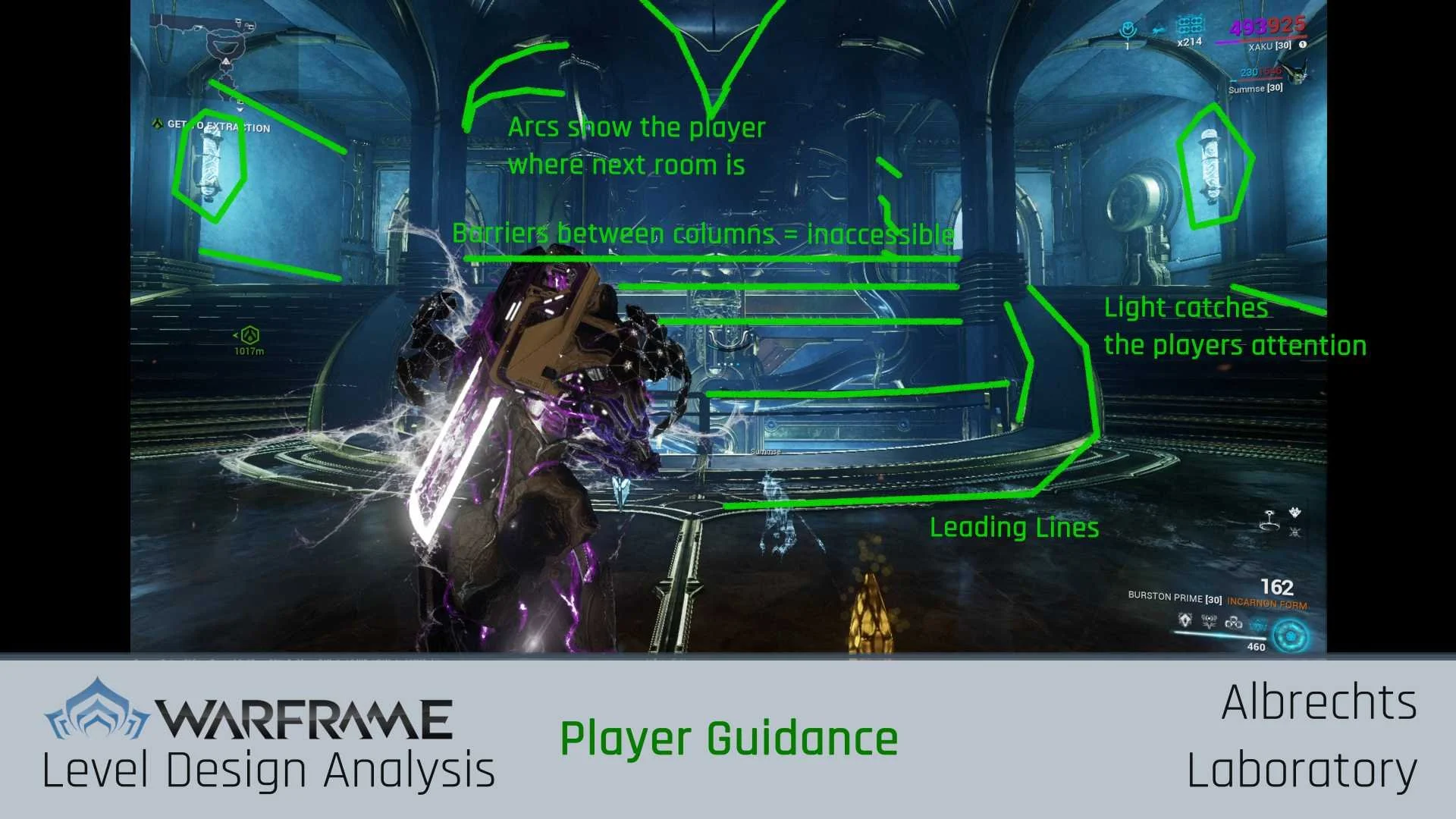

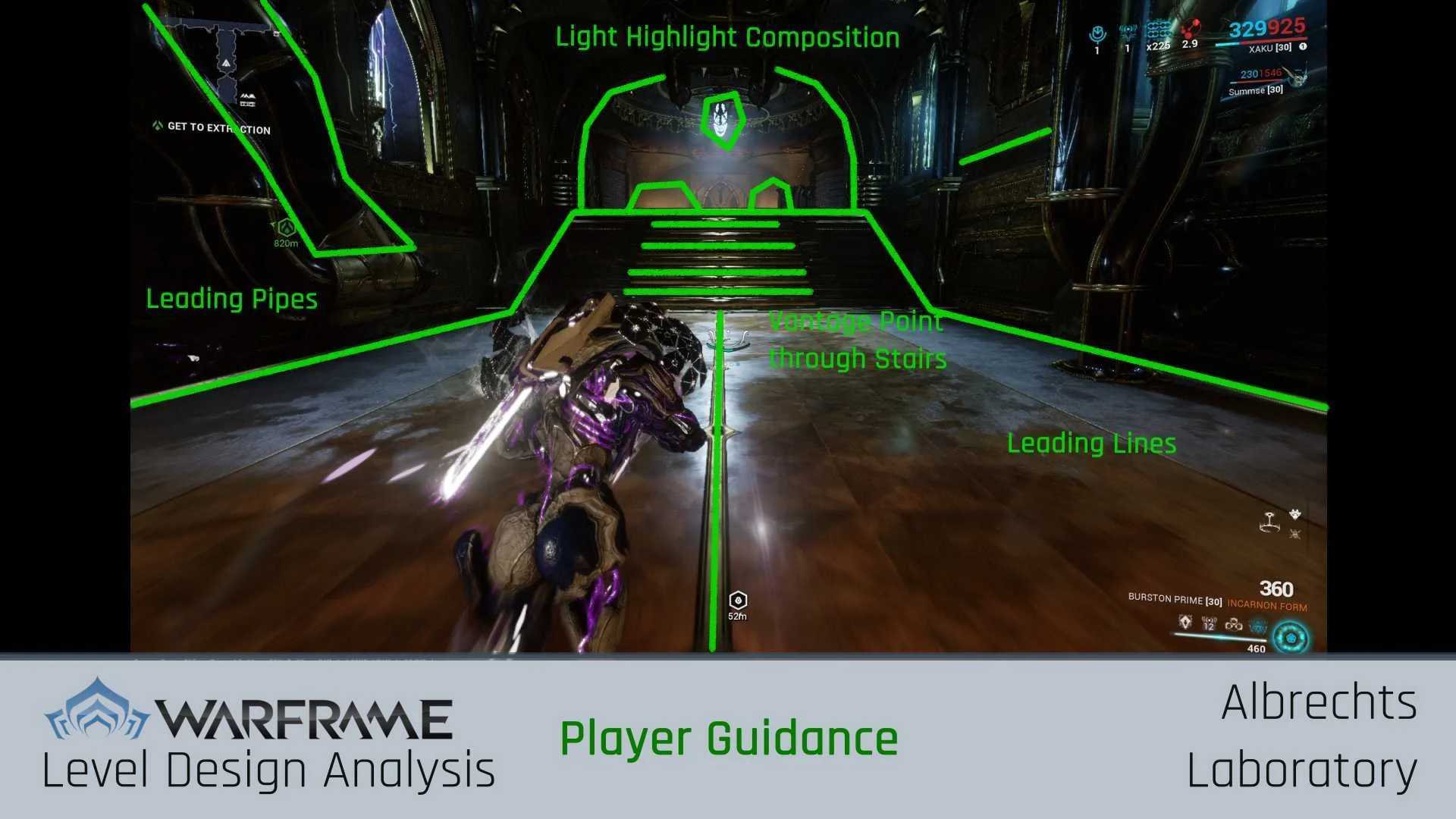

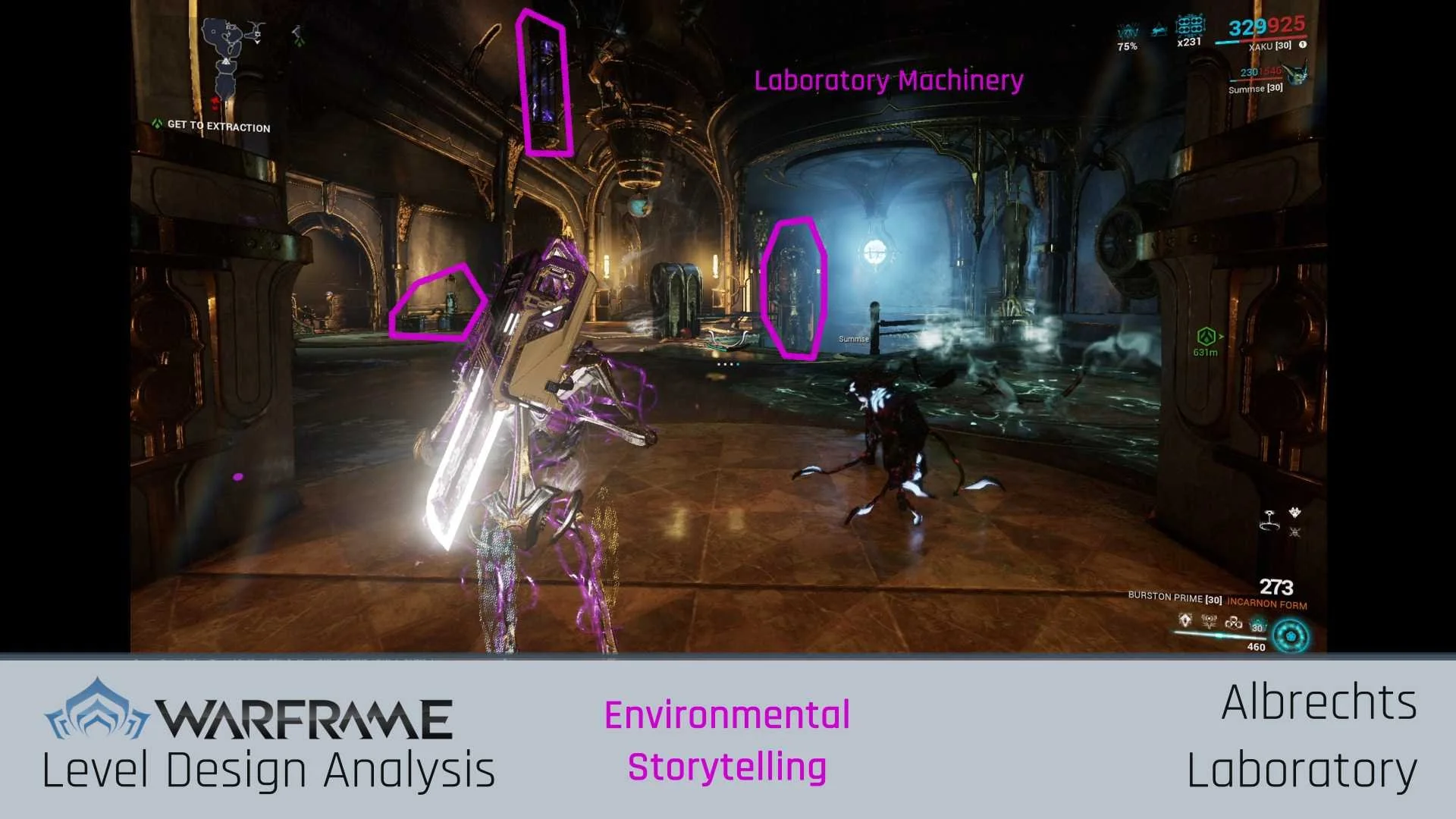
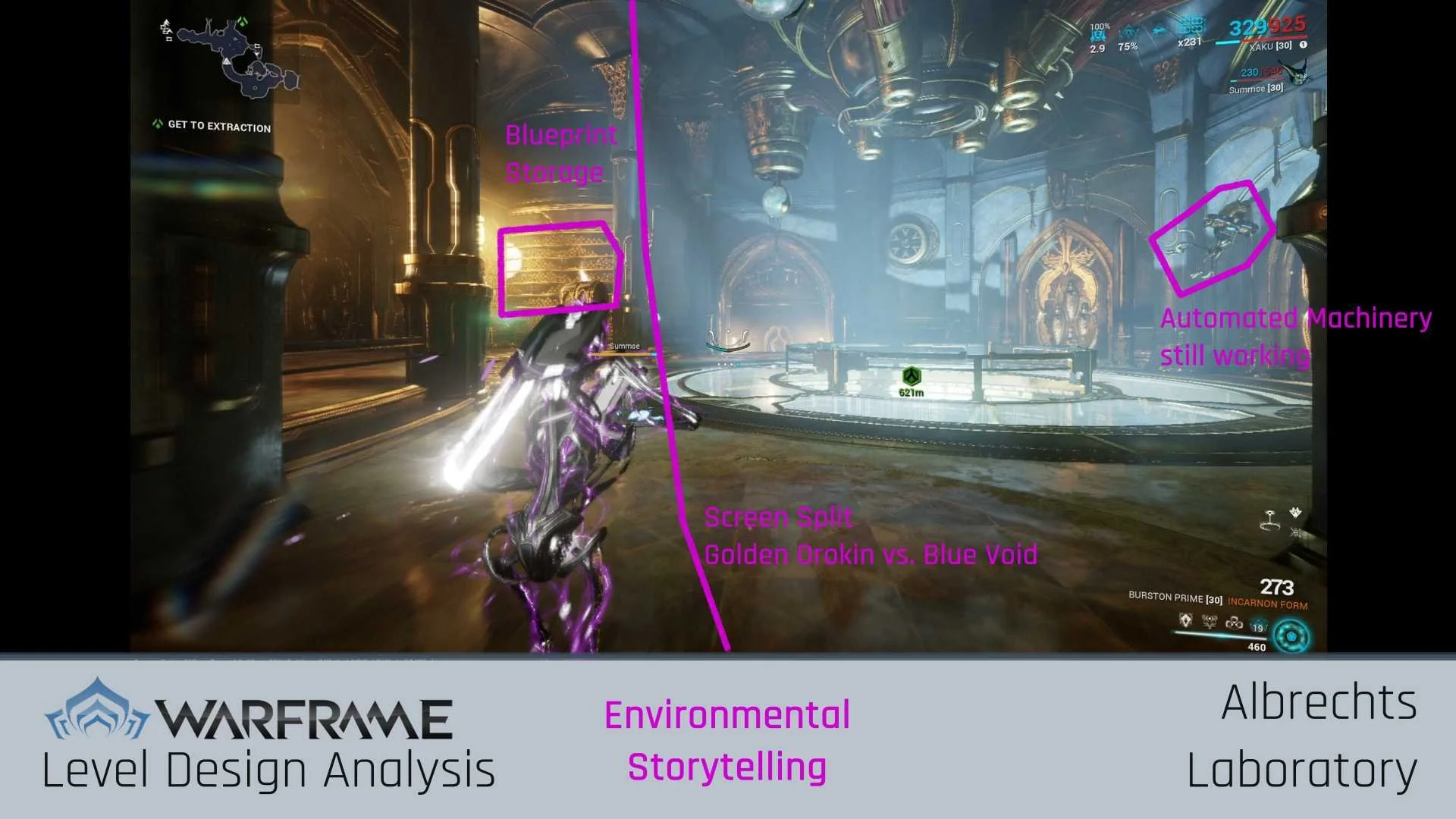
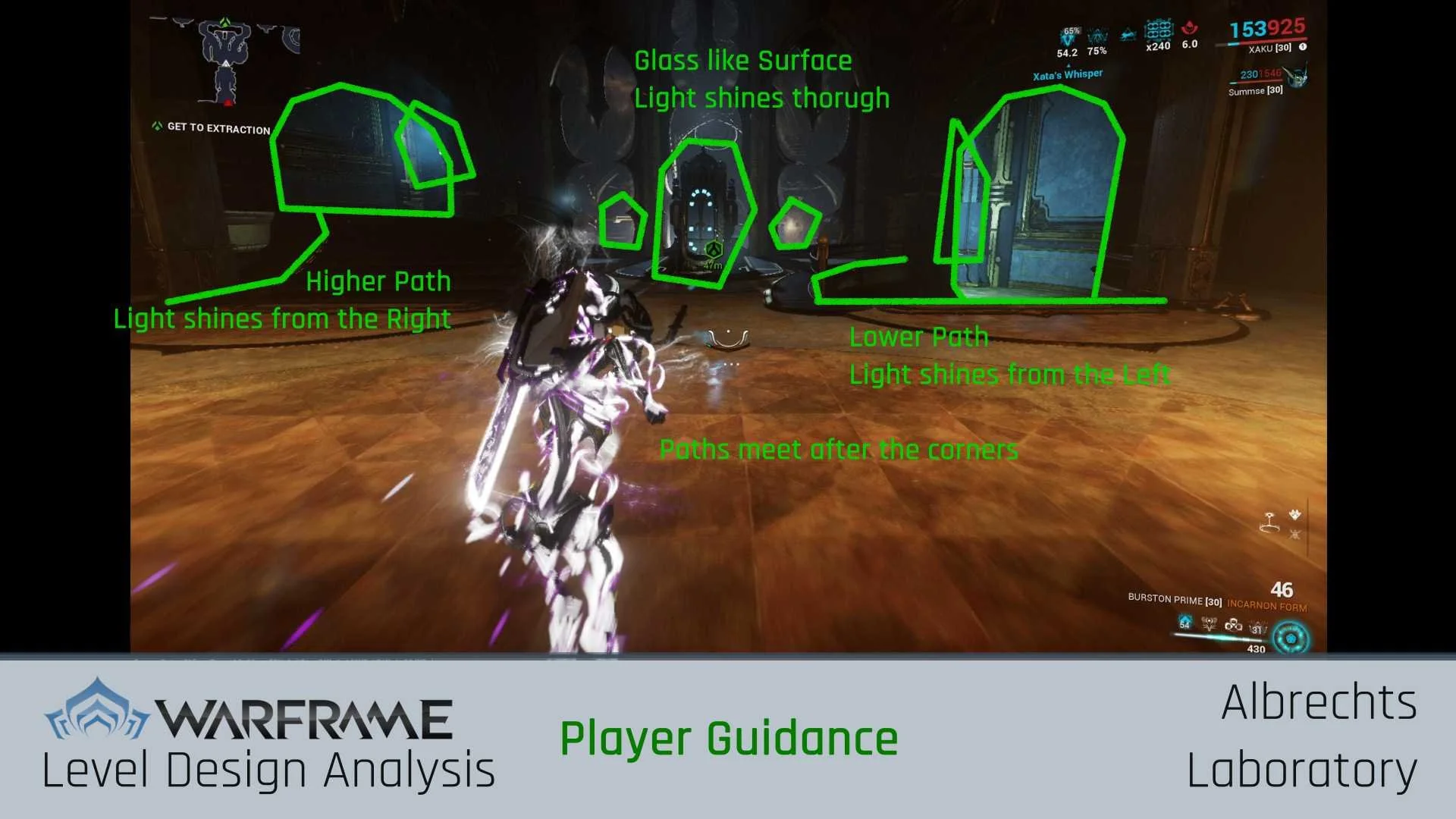

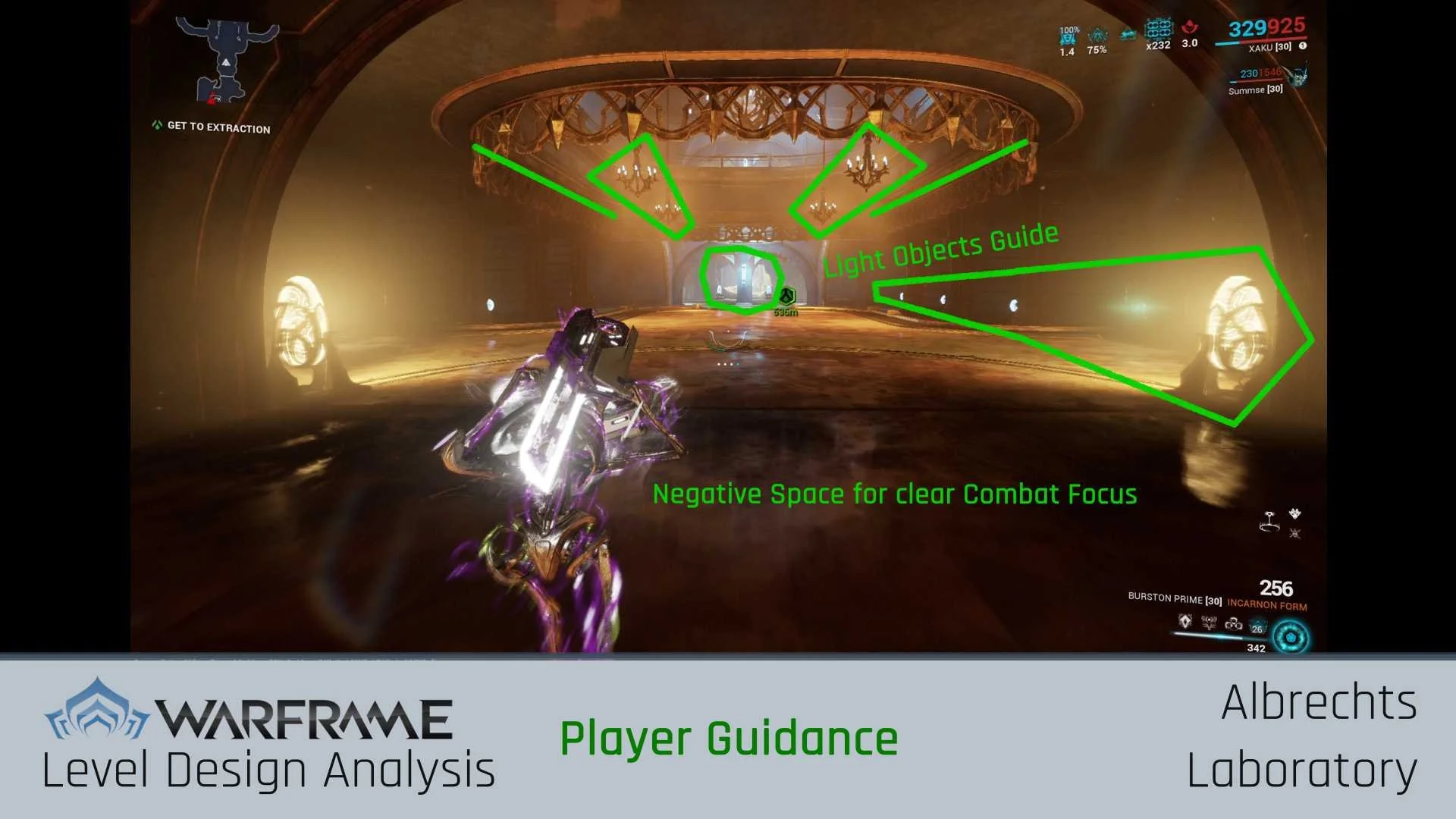
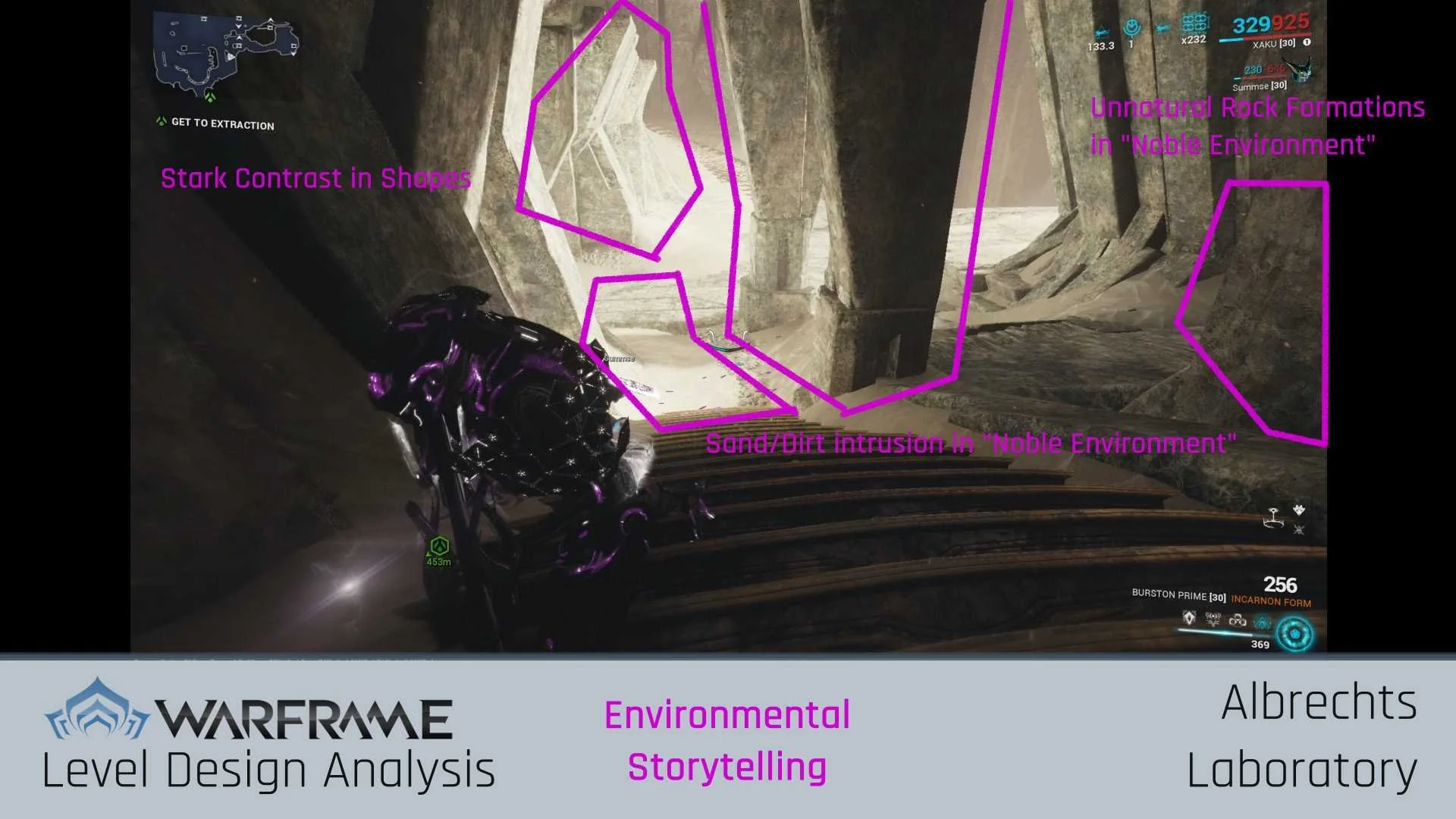
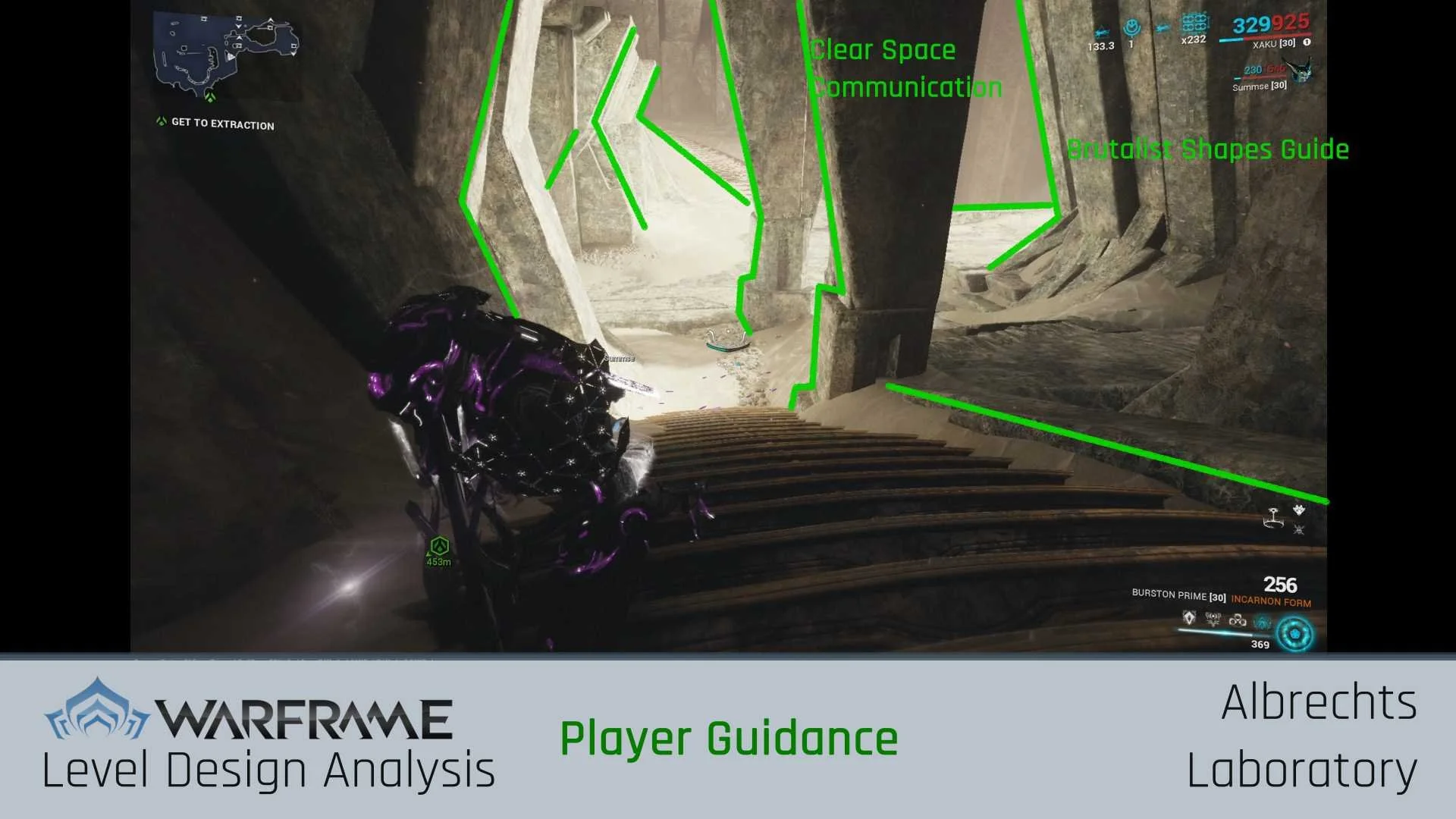


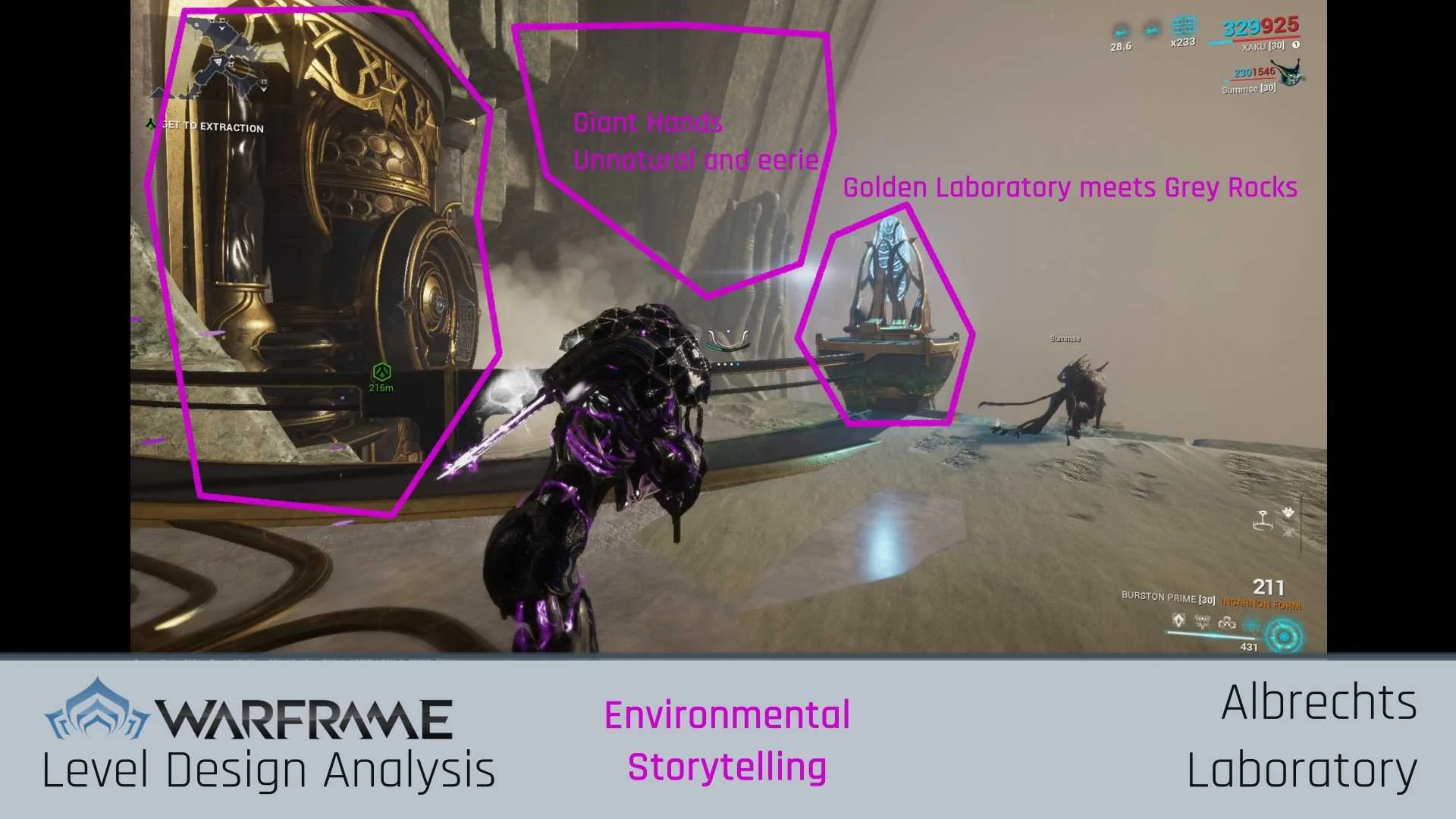
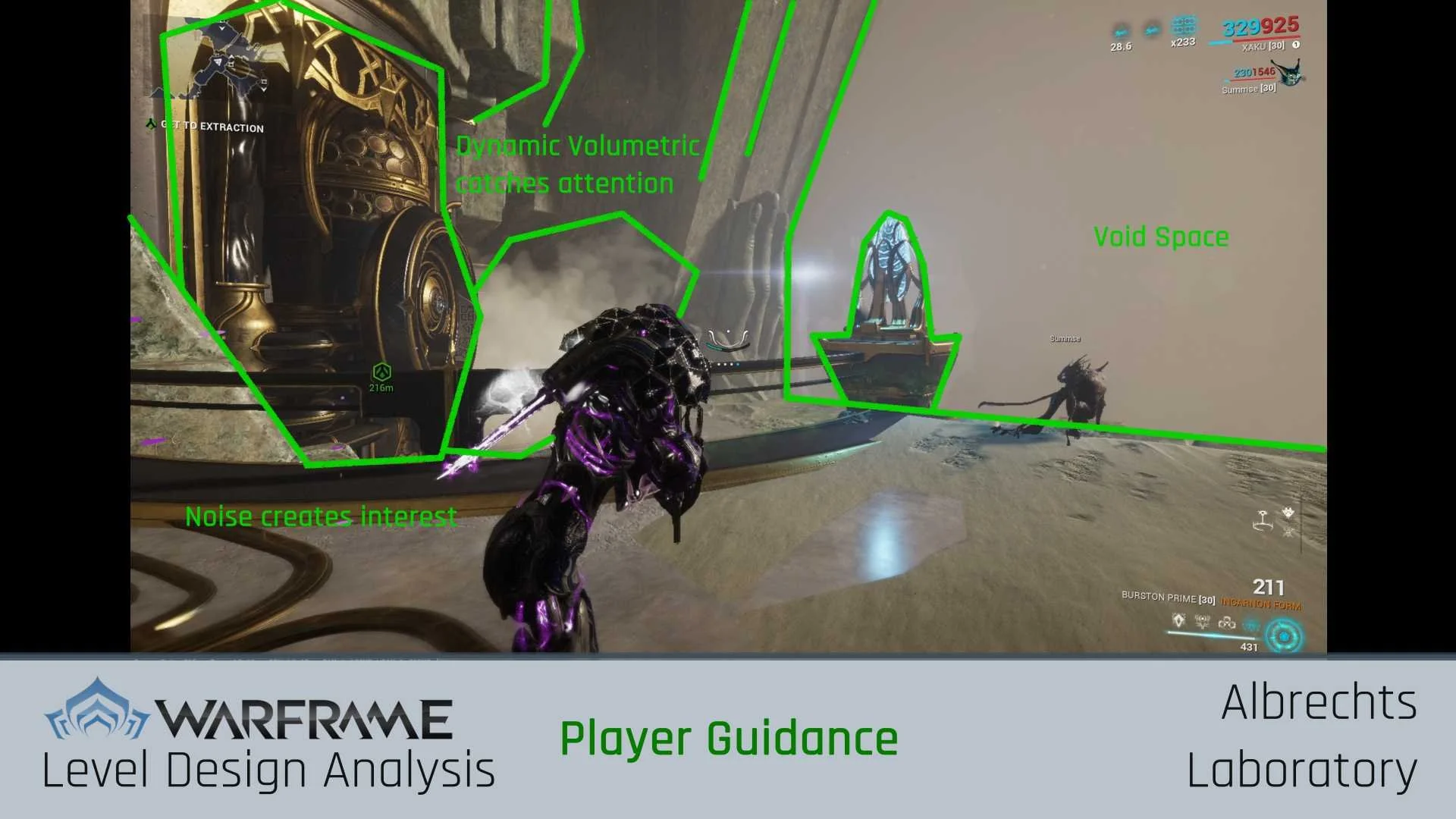
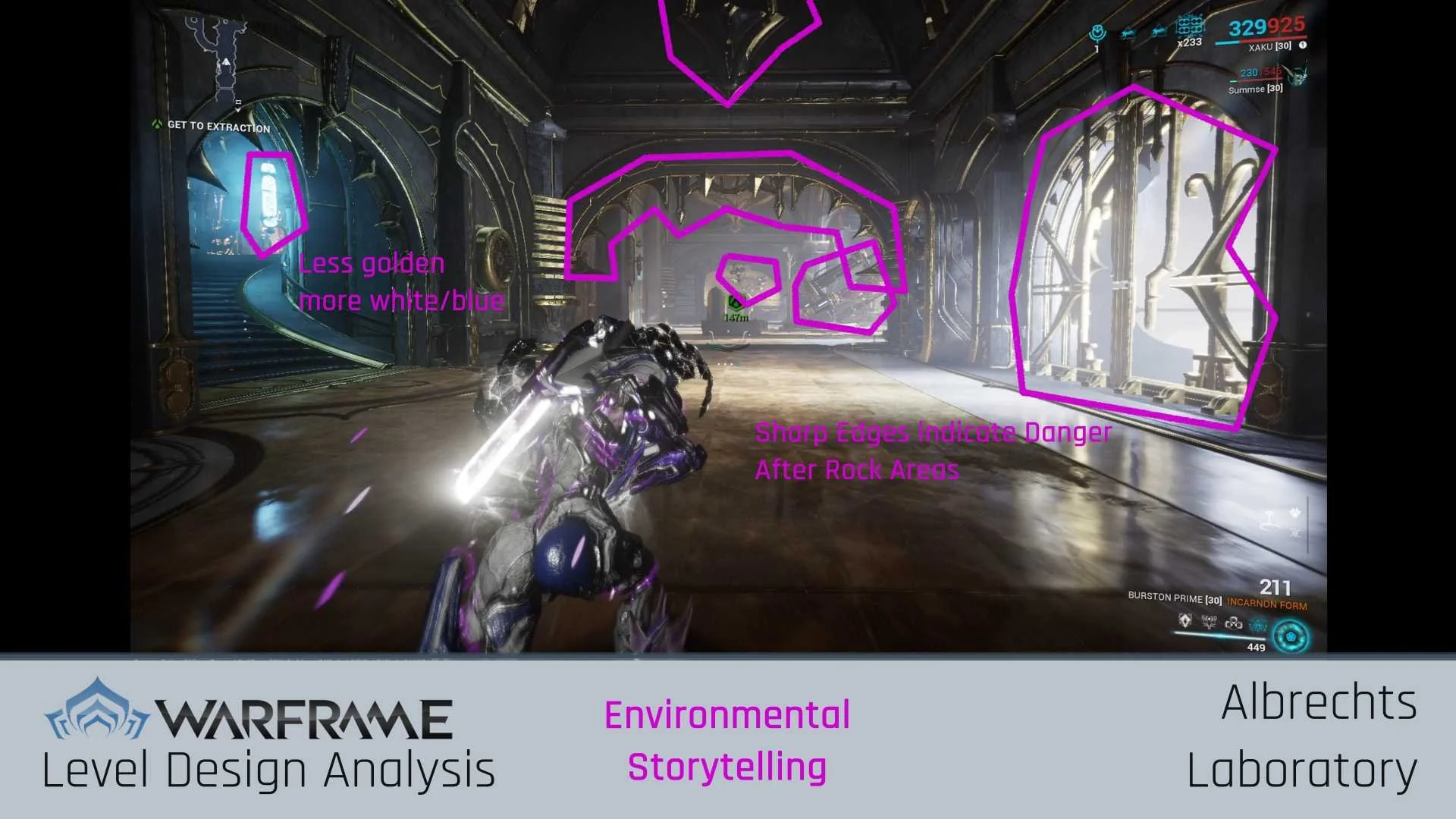
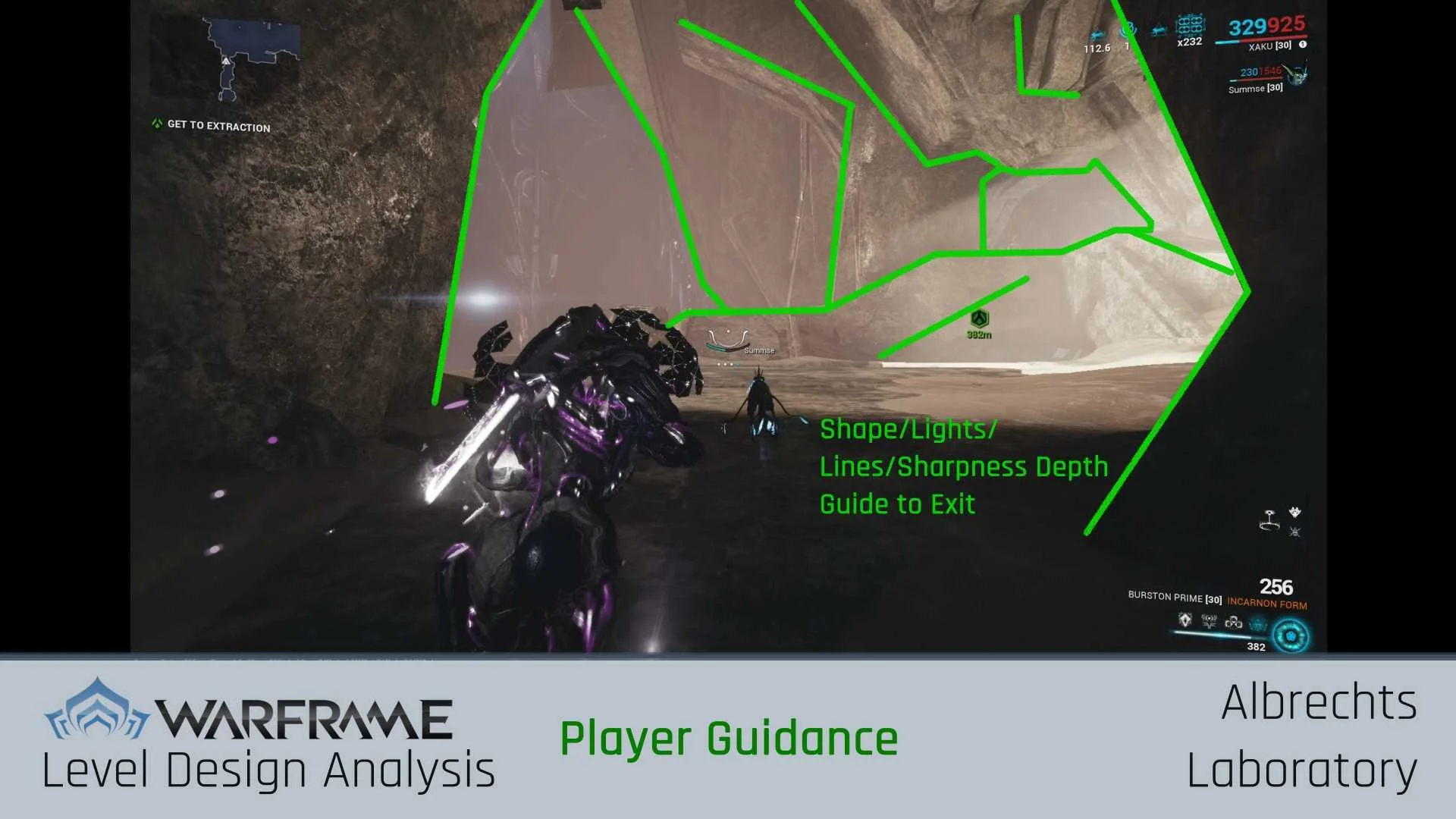
Concepts

(0) Start Room - Copied from Original Warframe
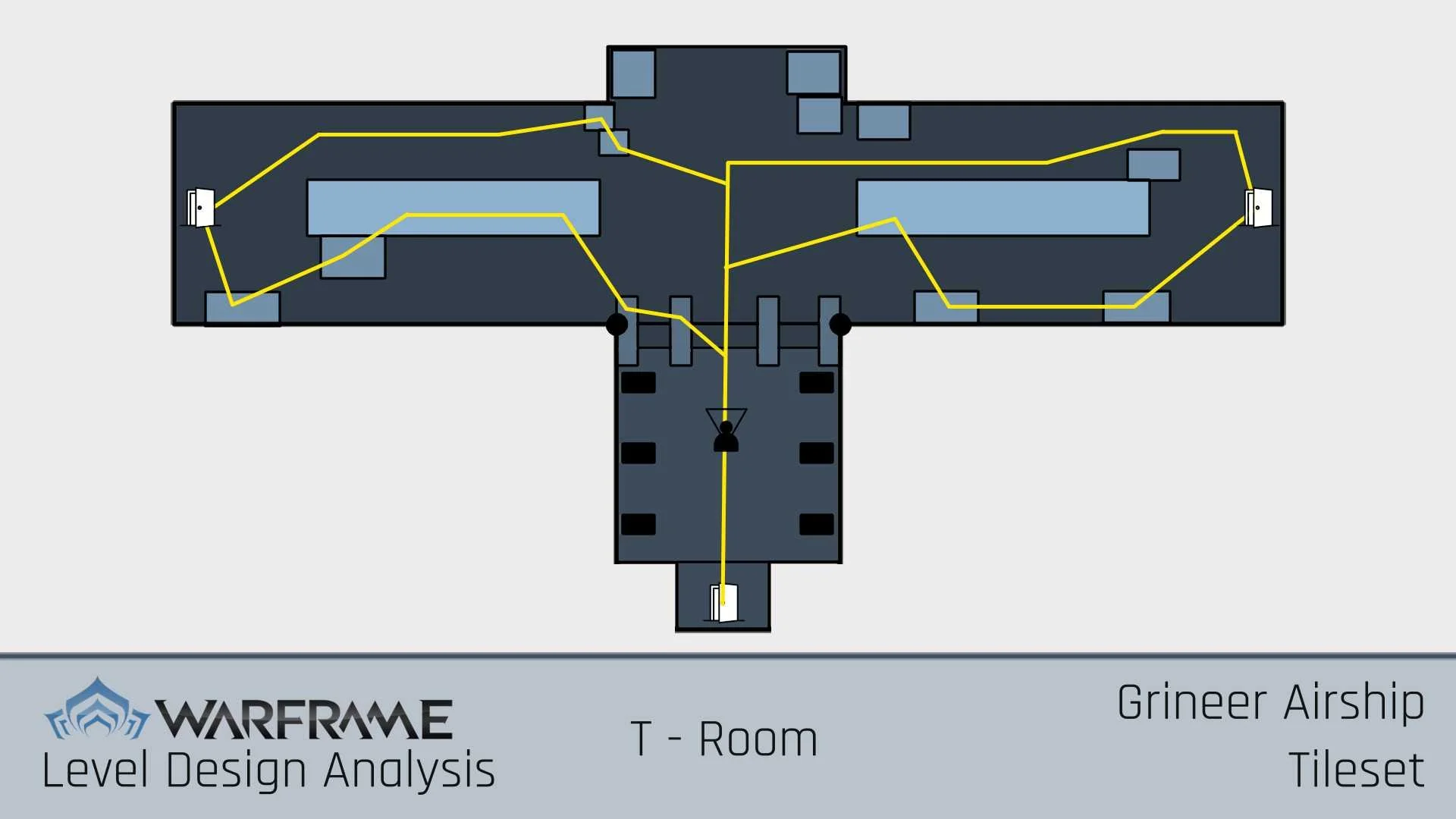
(1) T Room - Copied from Original Warframe

(2) 2 Story Room - Copied from Original Warframe
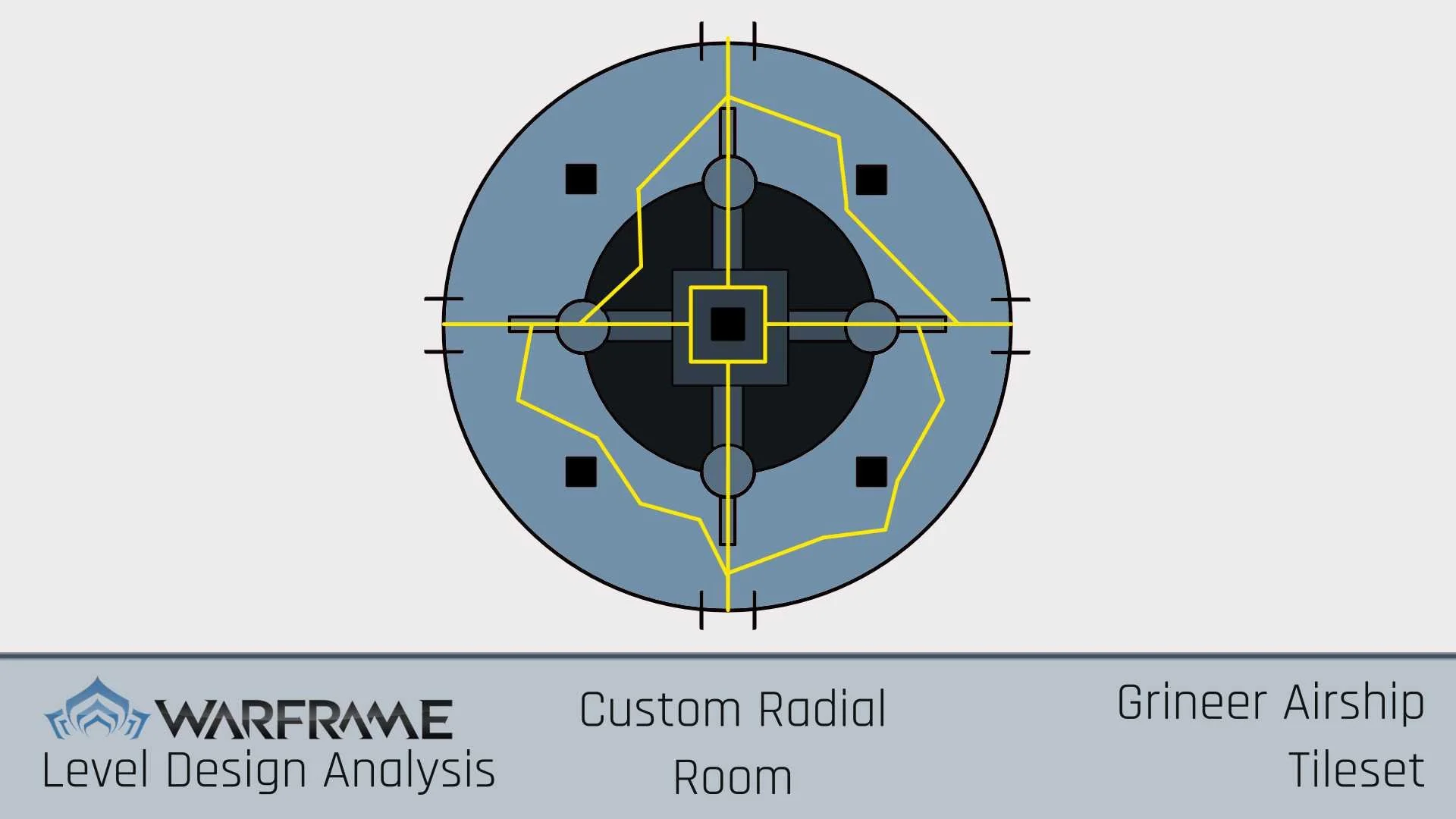
(3) Circular Room - Custom Designed Room

(4) Murmur Room - Custom Designed Room
Coding Warframe’s Systems
Traversal System – Fluid Parkour Mechanics
Bullet Jumping: A high-velocity, omni-directional leap that combines crouch + jump. It serves as the foundation for speedrunning and allows players to clear large spaces quickly.
Rolling & Dodge: Short, snappy evasive maneuvers that grant brief damage reduction. Rolls maintain fluidity by preserving momentum rather than halting it.
Momentum Preservation: Every action compounds into the next. Bullet jumps chain into rolls, rolls into slides, and slides into wall hops, all without forcing a hard stop.
Camera & Perspective: The camera is tuned to exaggerate speed, slight FOV shifts, camera tilts, and motion blur amplify the sense of acceleration and force.
Enemy AI – Patrol & Awareness States
Patrolling: Enemies follow predictable routes, checking rooms or standing guard. Their movement patterns signal safe vs unsafe zones to the player.
Sound Awareness: Loud gunfire, ability casts, or footsteps within a radius can pull enemies out of patrol, pushing them into an investigation state.
Line-of-Sight Checks: Enemies visually confirm player presence. If the player breaks line of sight, the AI falls back into a cautious search rather than instantly forgetting.
States:
Idle/Patrol – following routes or guarding.
Suspicious/Alerted – reacting to sound or visual cues.
Engaged/Combat – actively attacking or pursuing the player.
Search/Reset – returning to patrol if the player evades.
Group Dynamics: Alarms or alerted units spread awareness across squads, turning isolated patrols into coordinated threats.
WIP Screenshots
